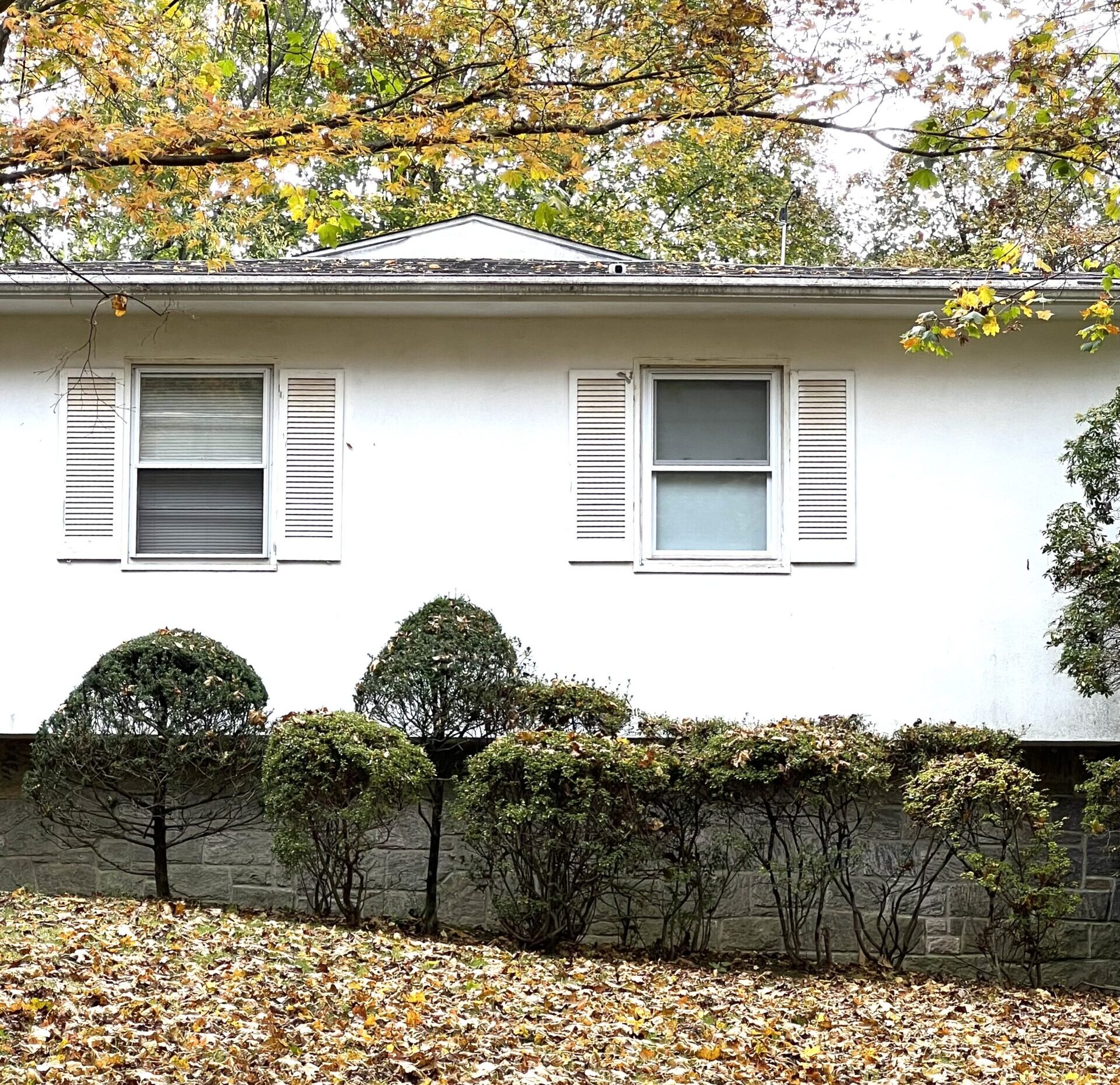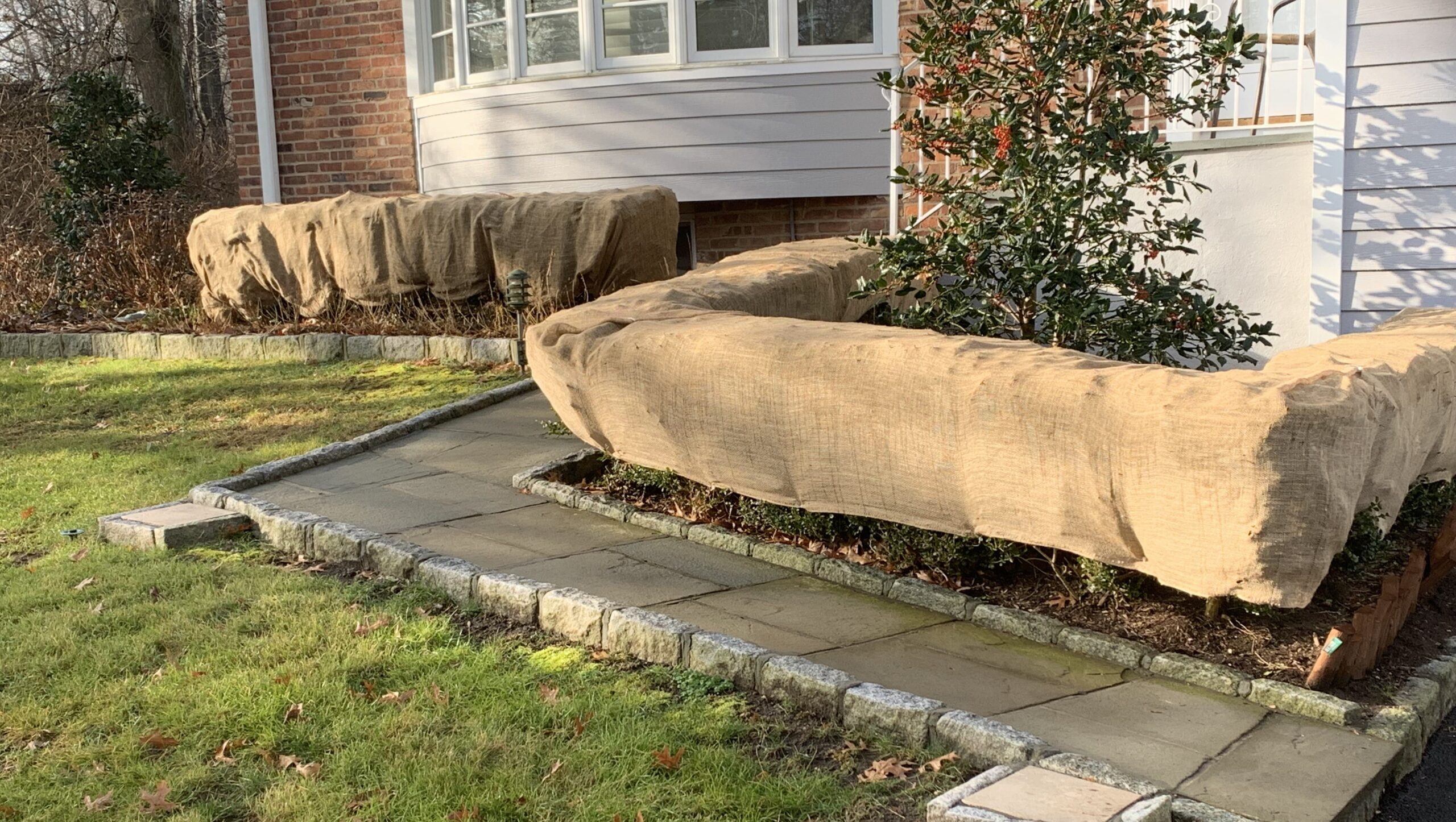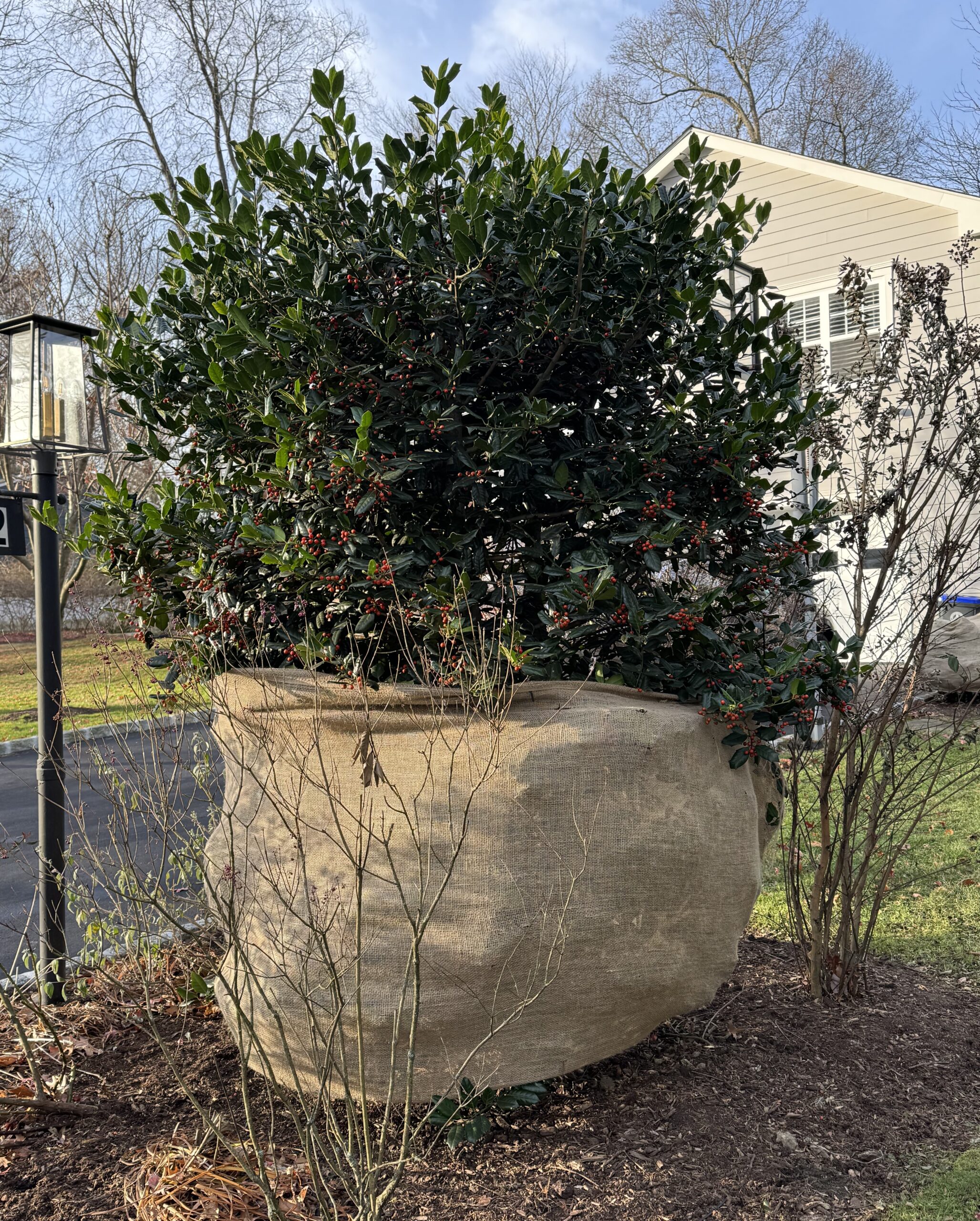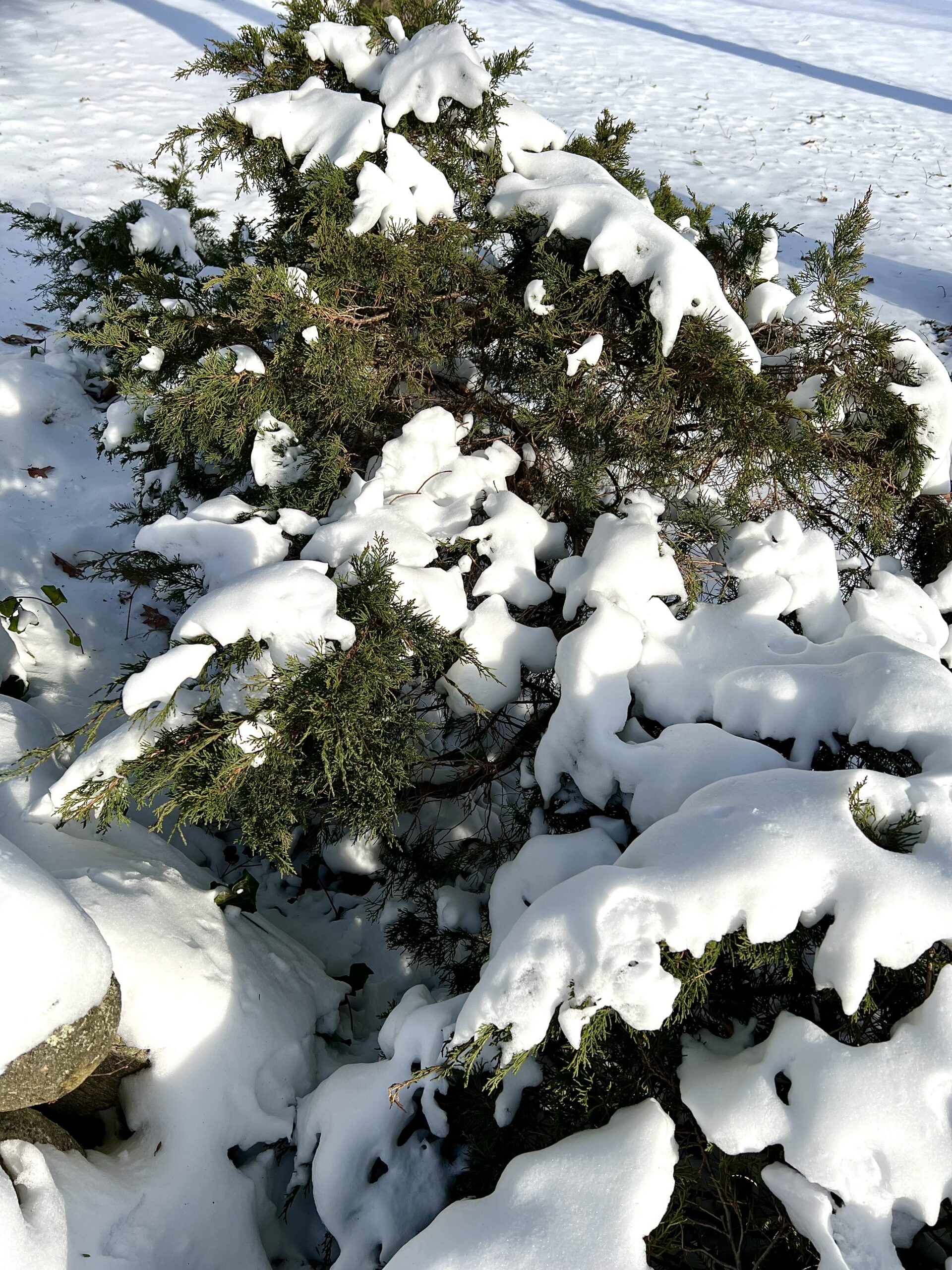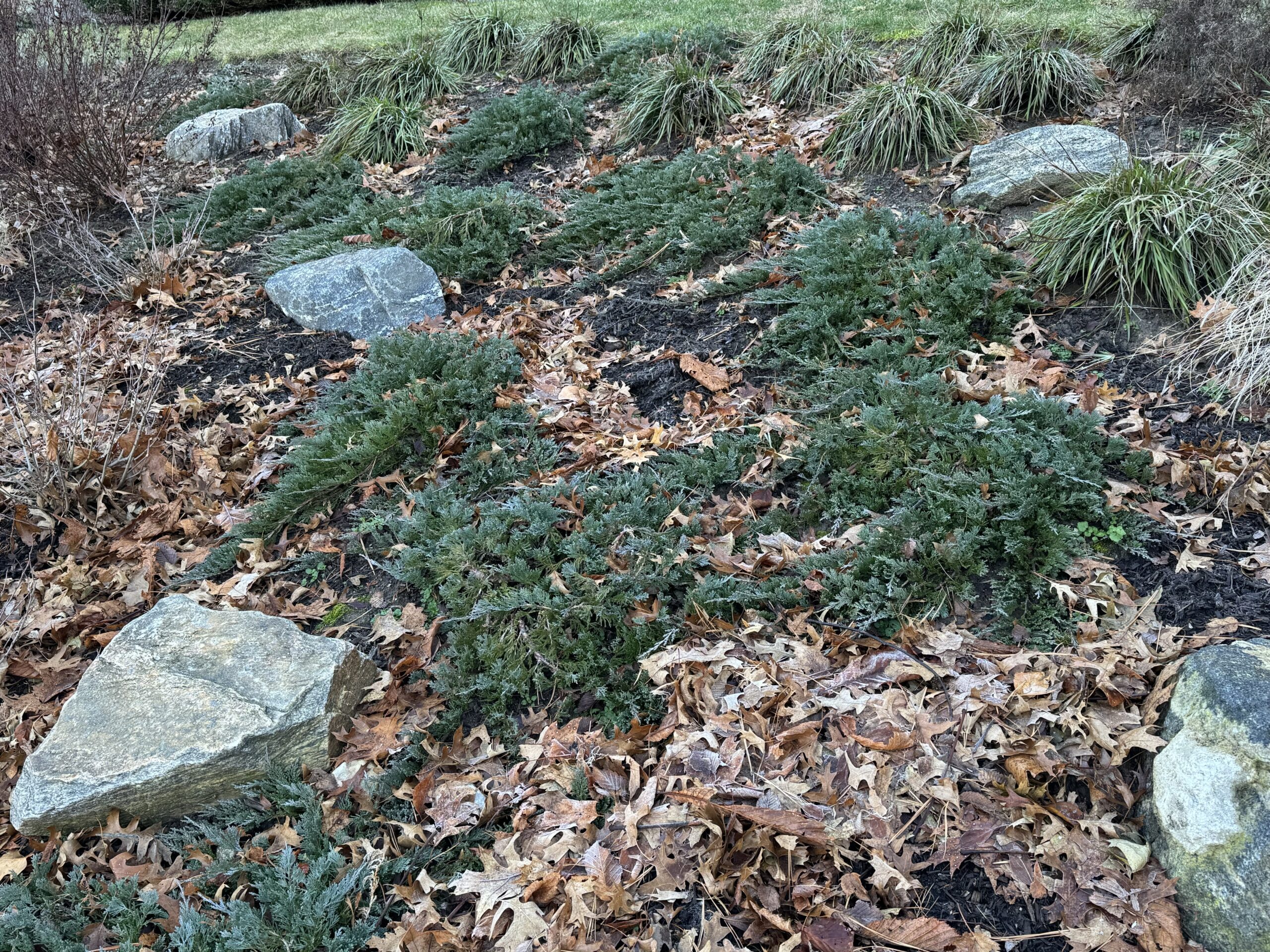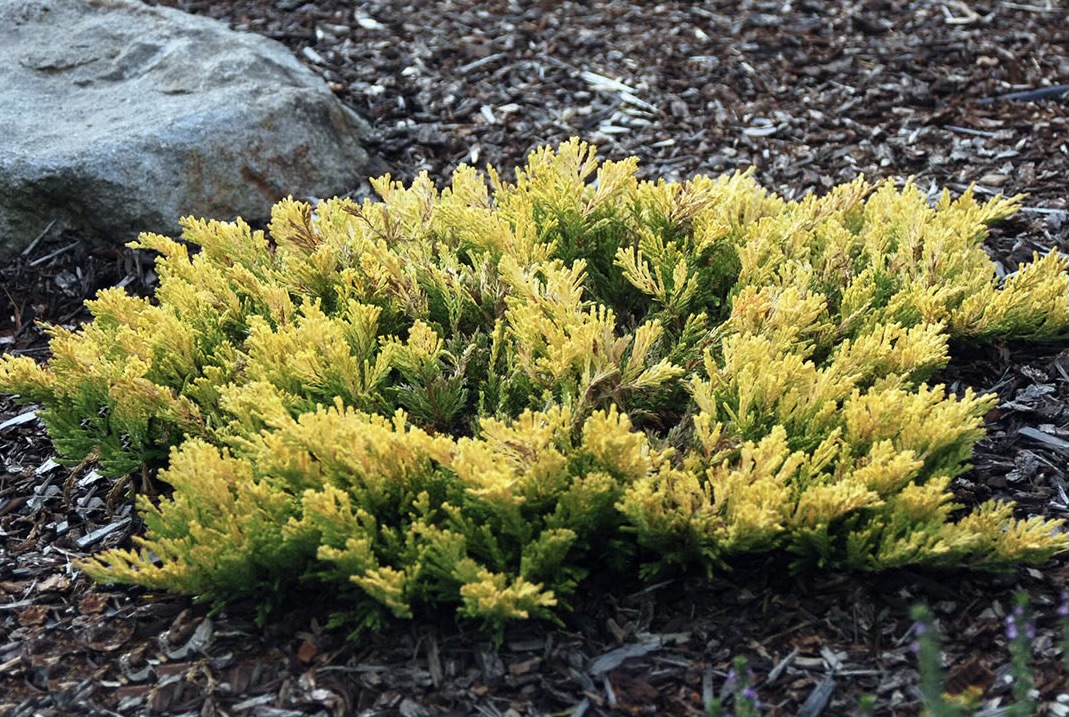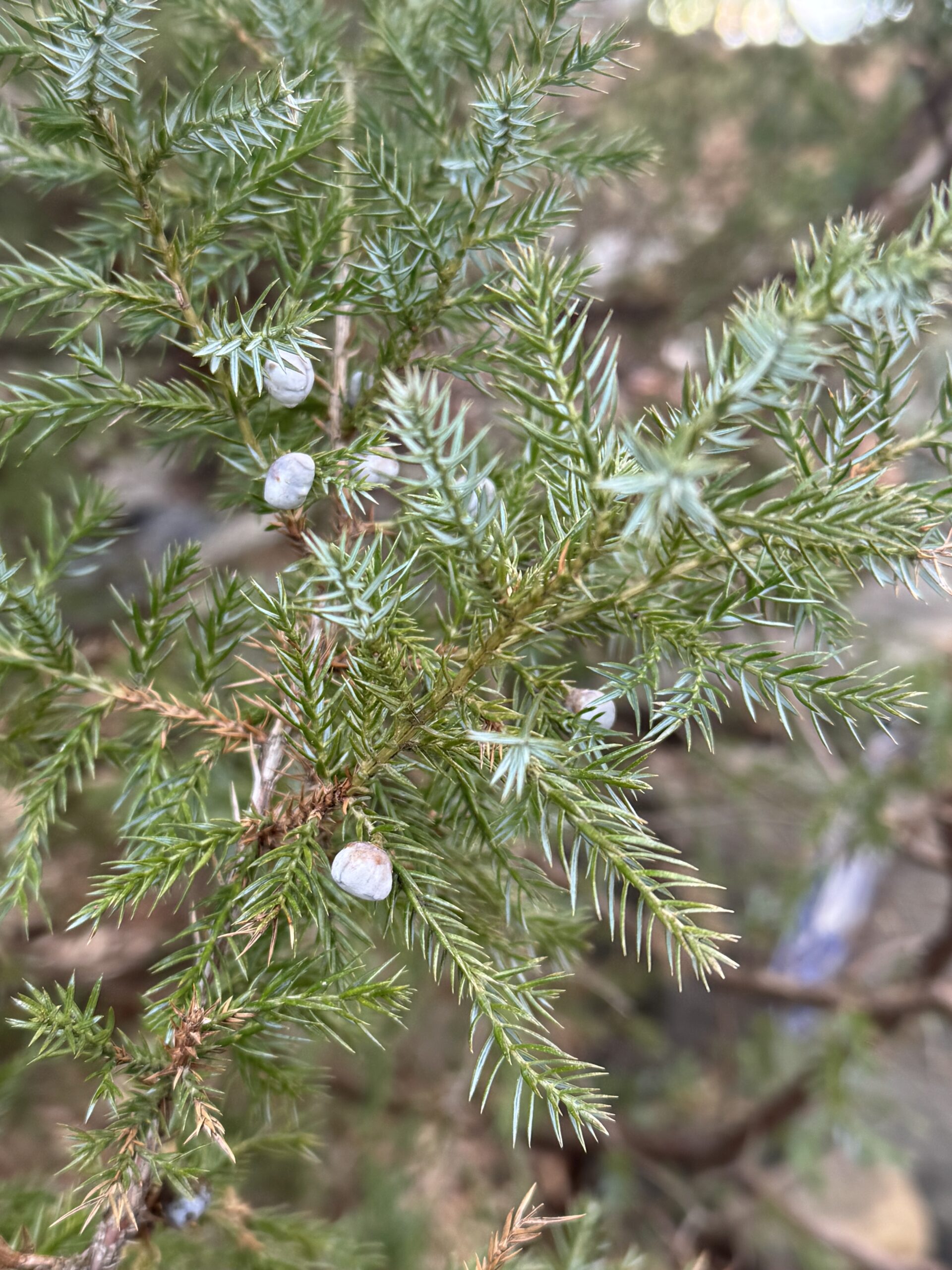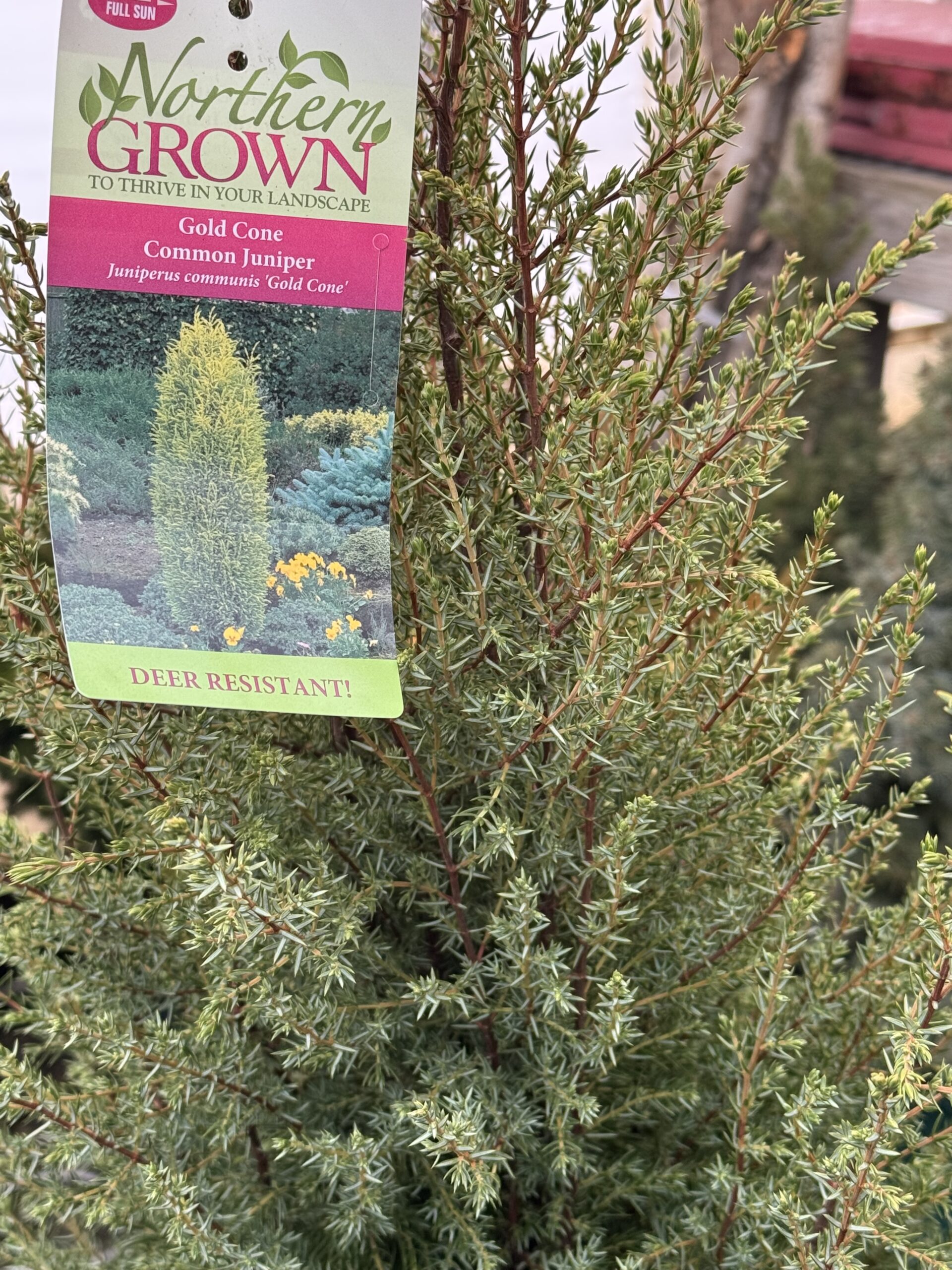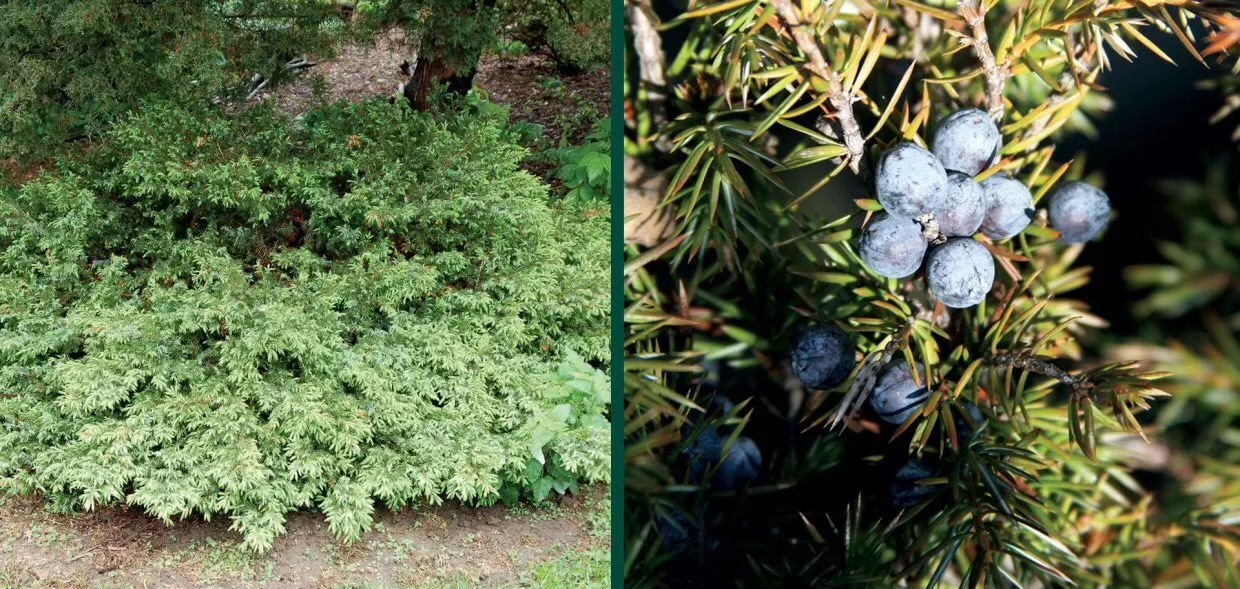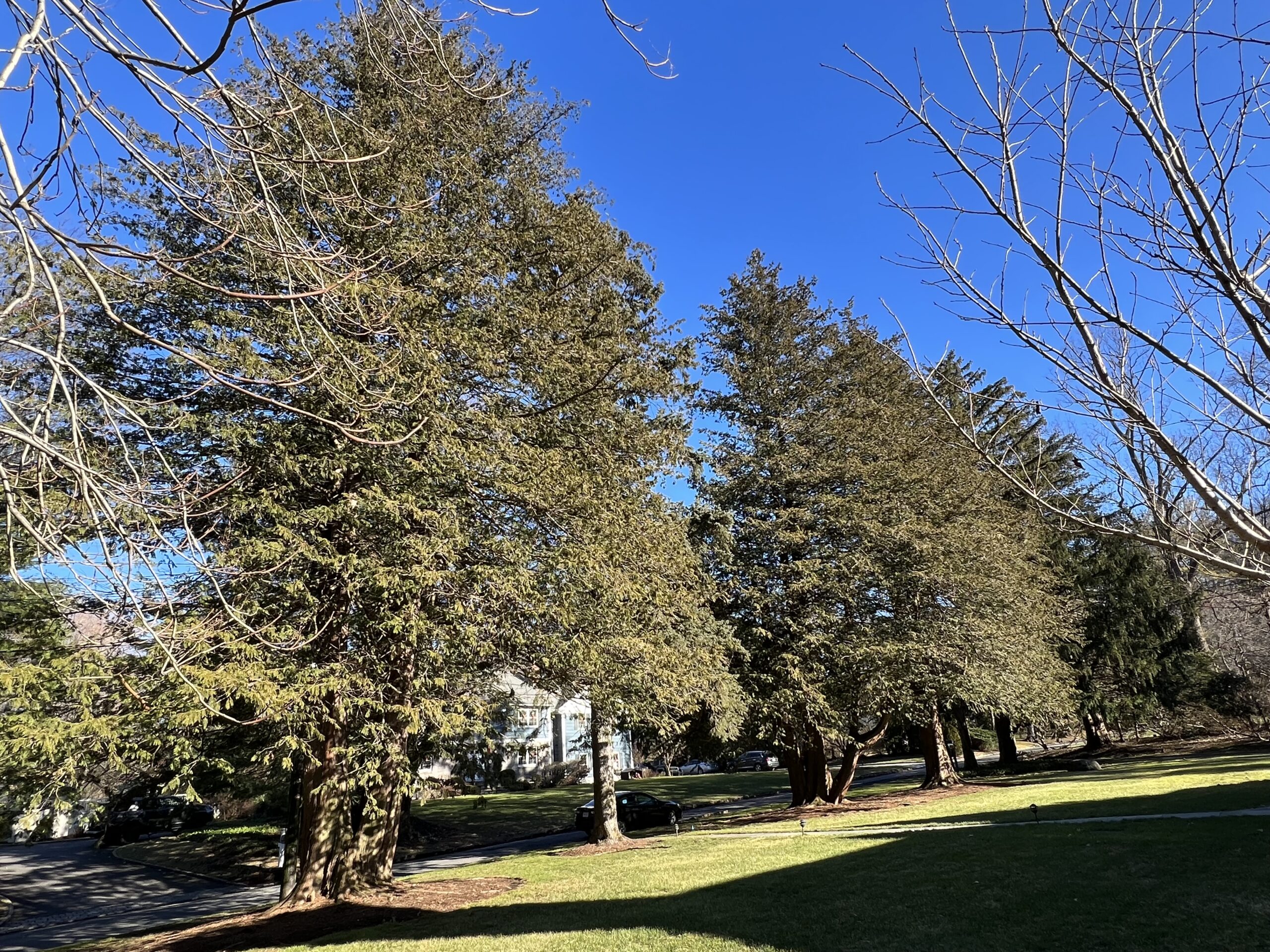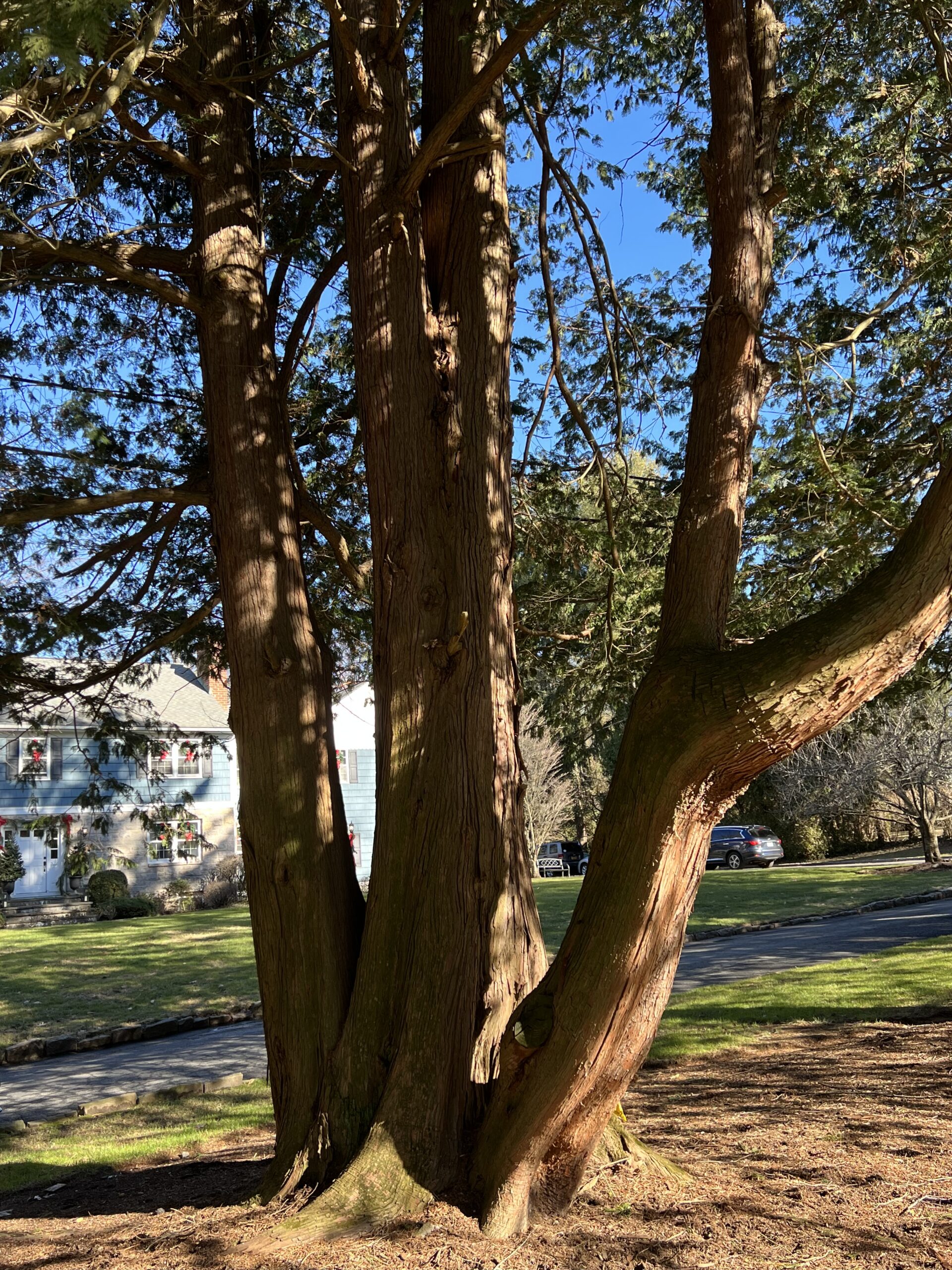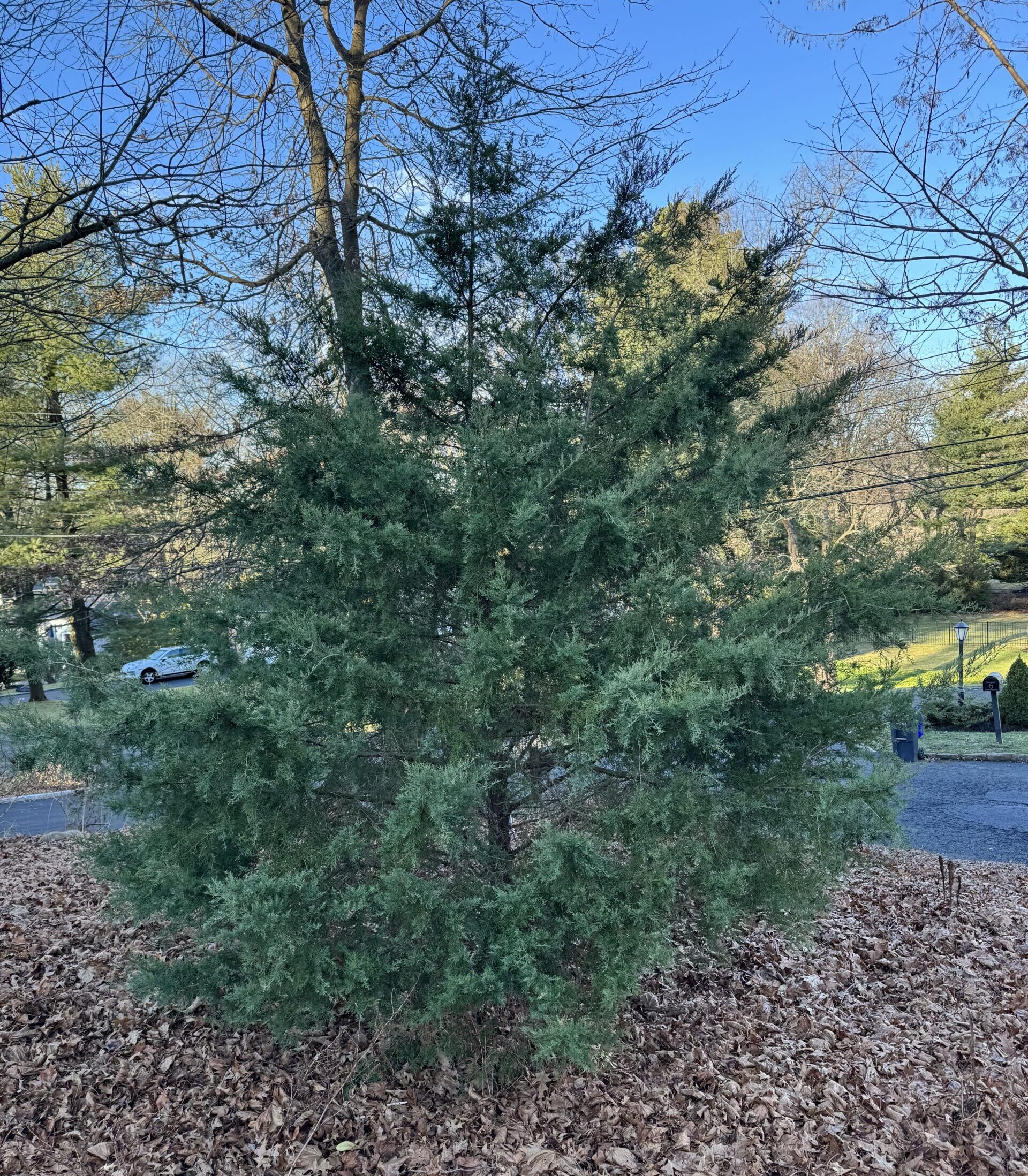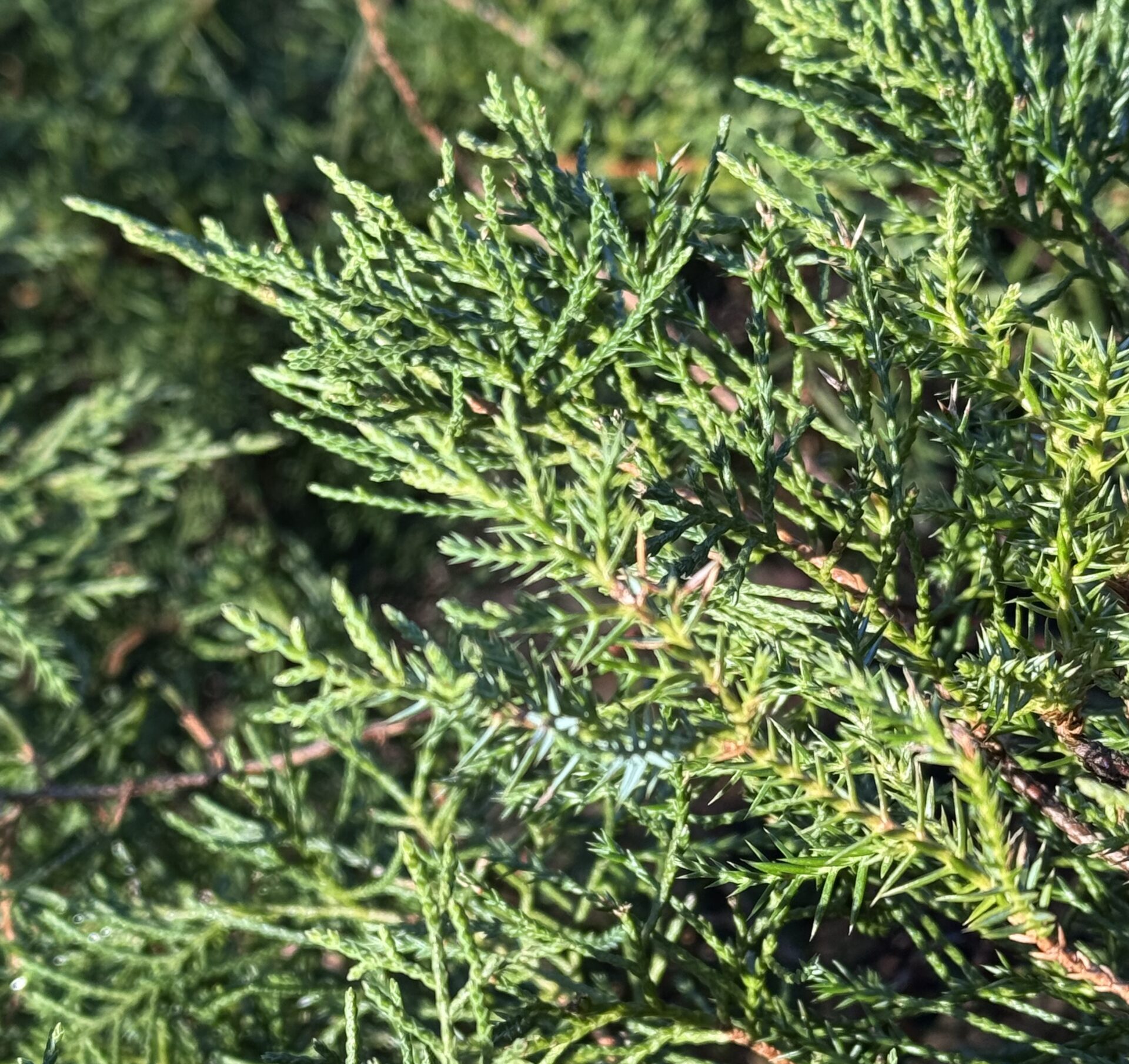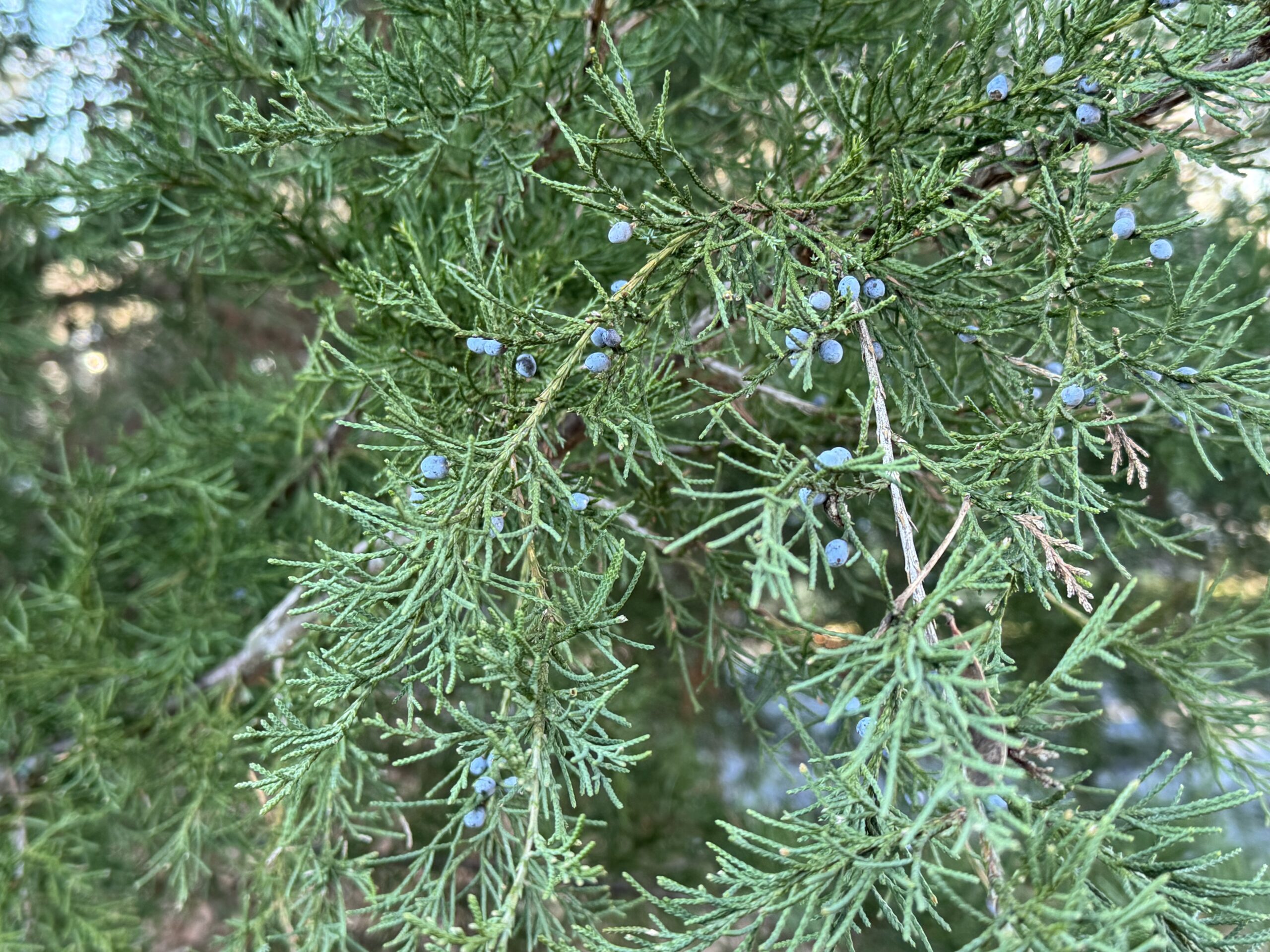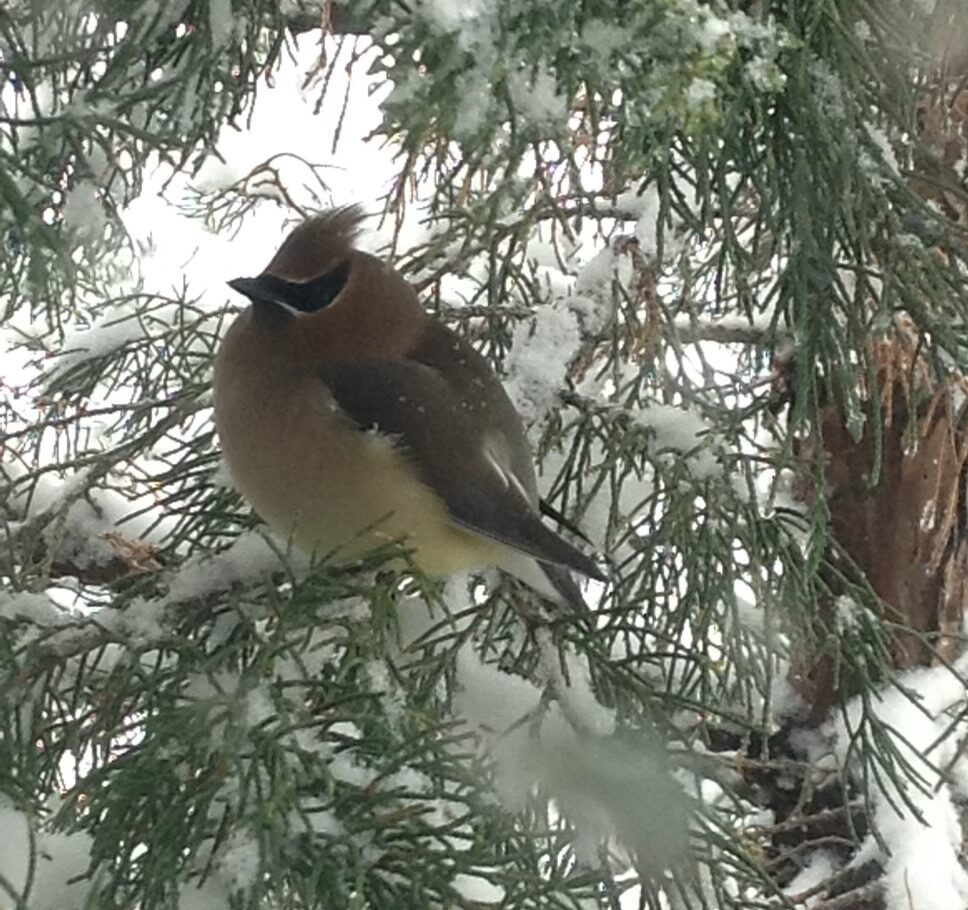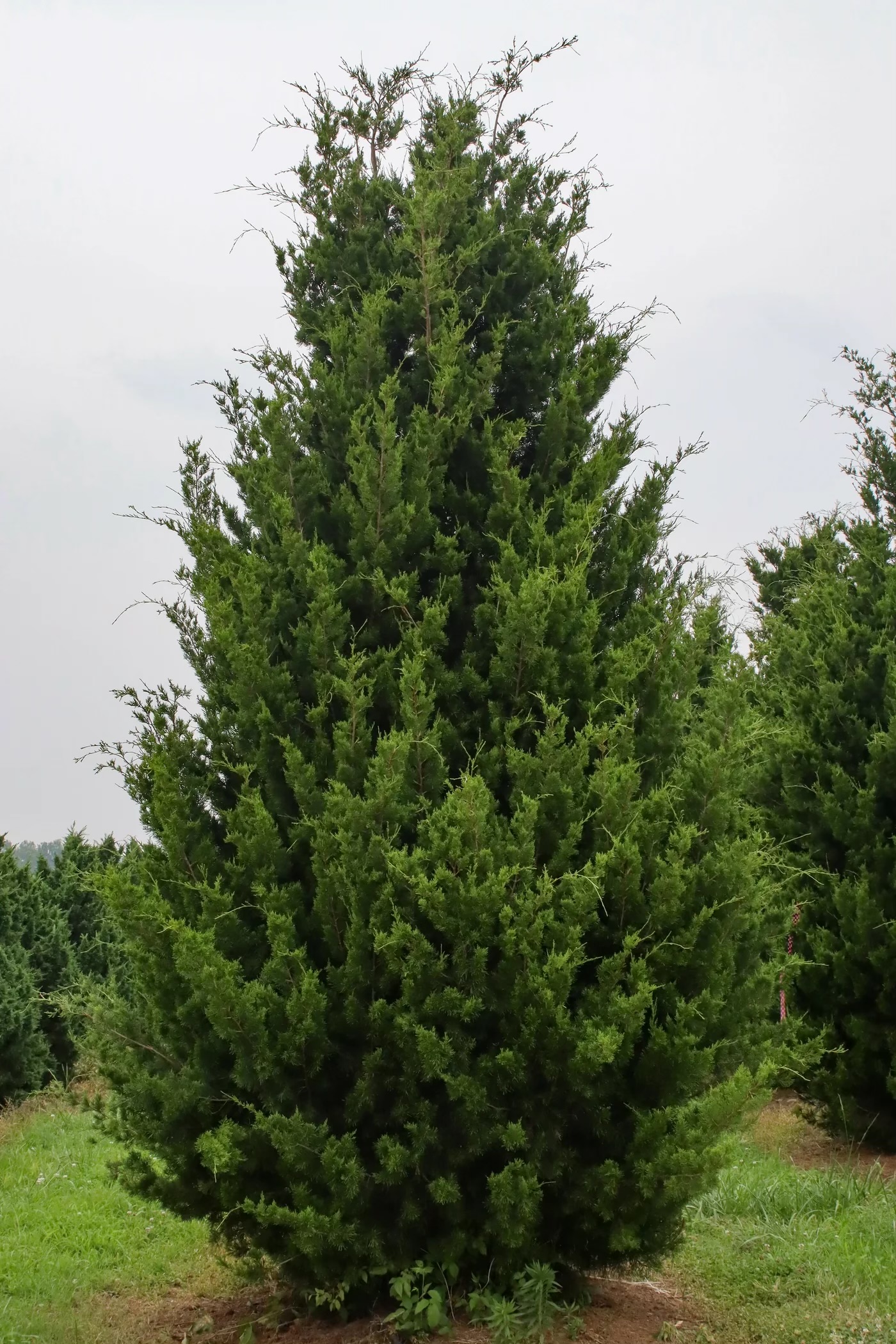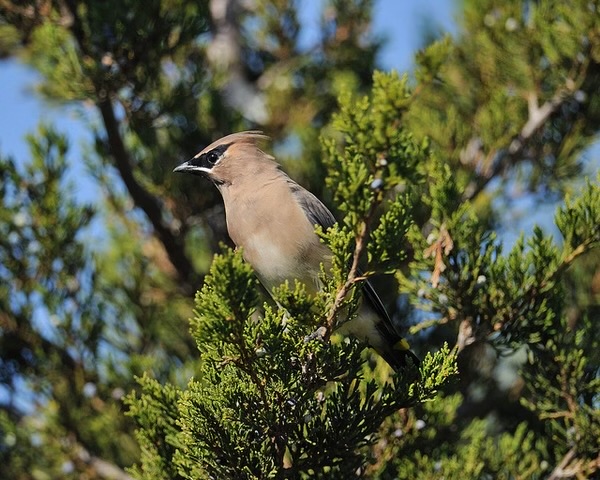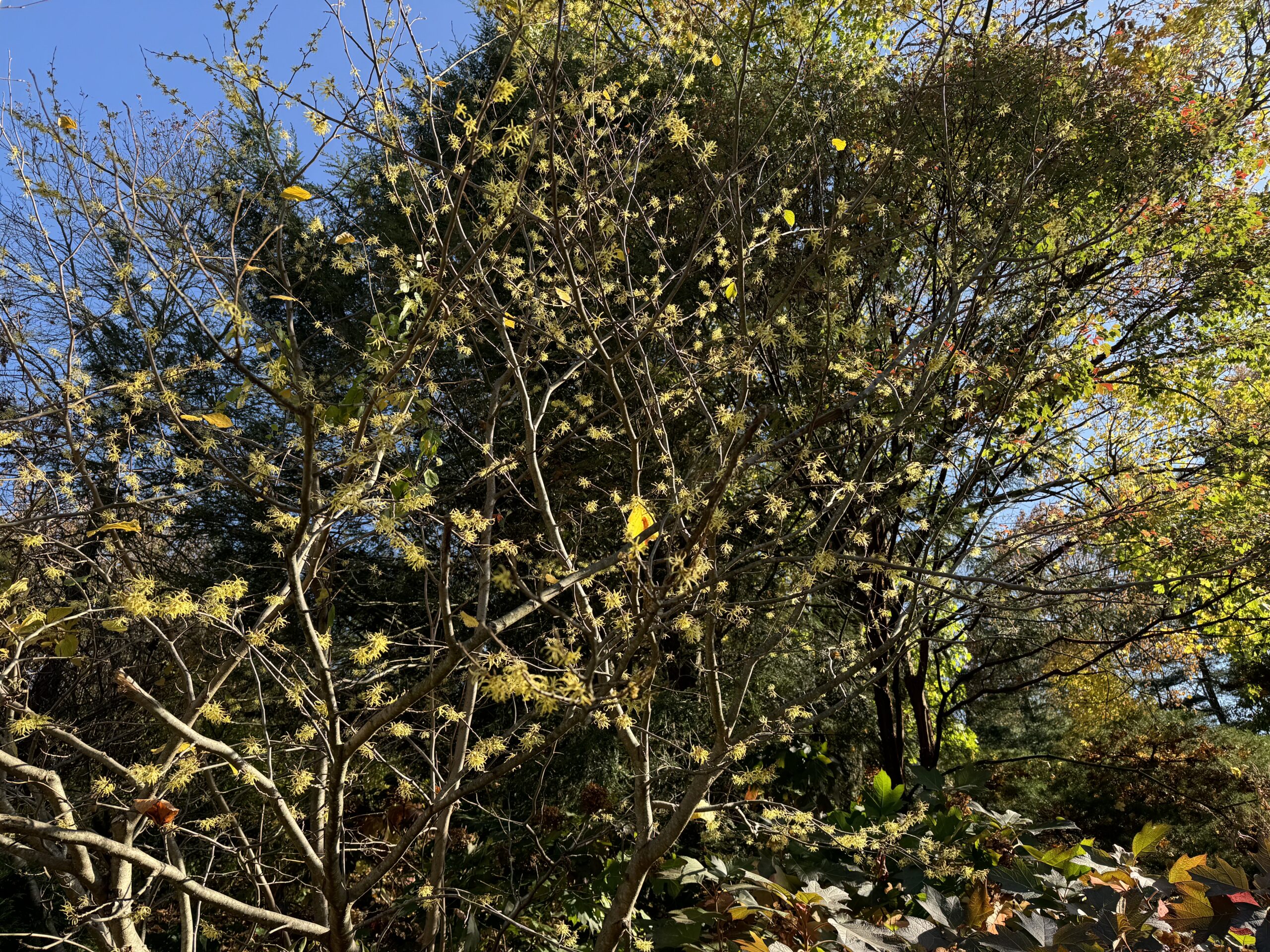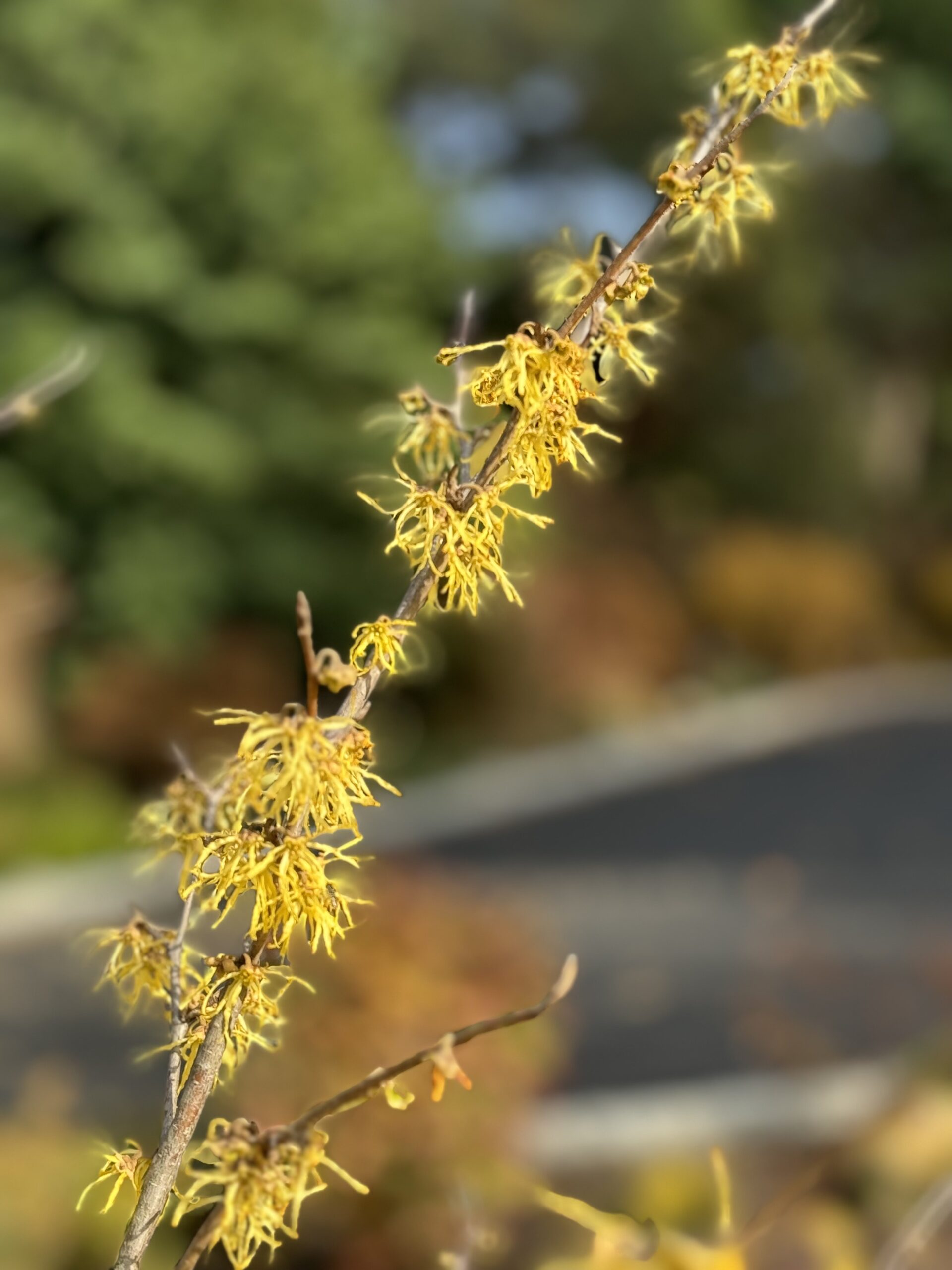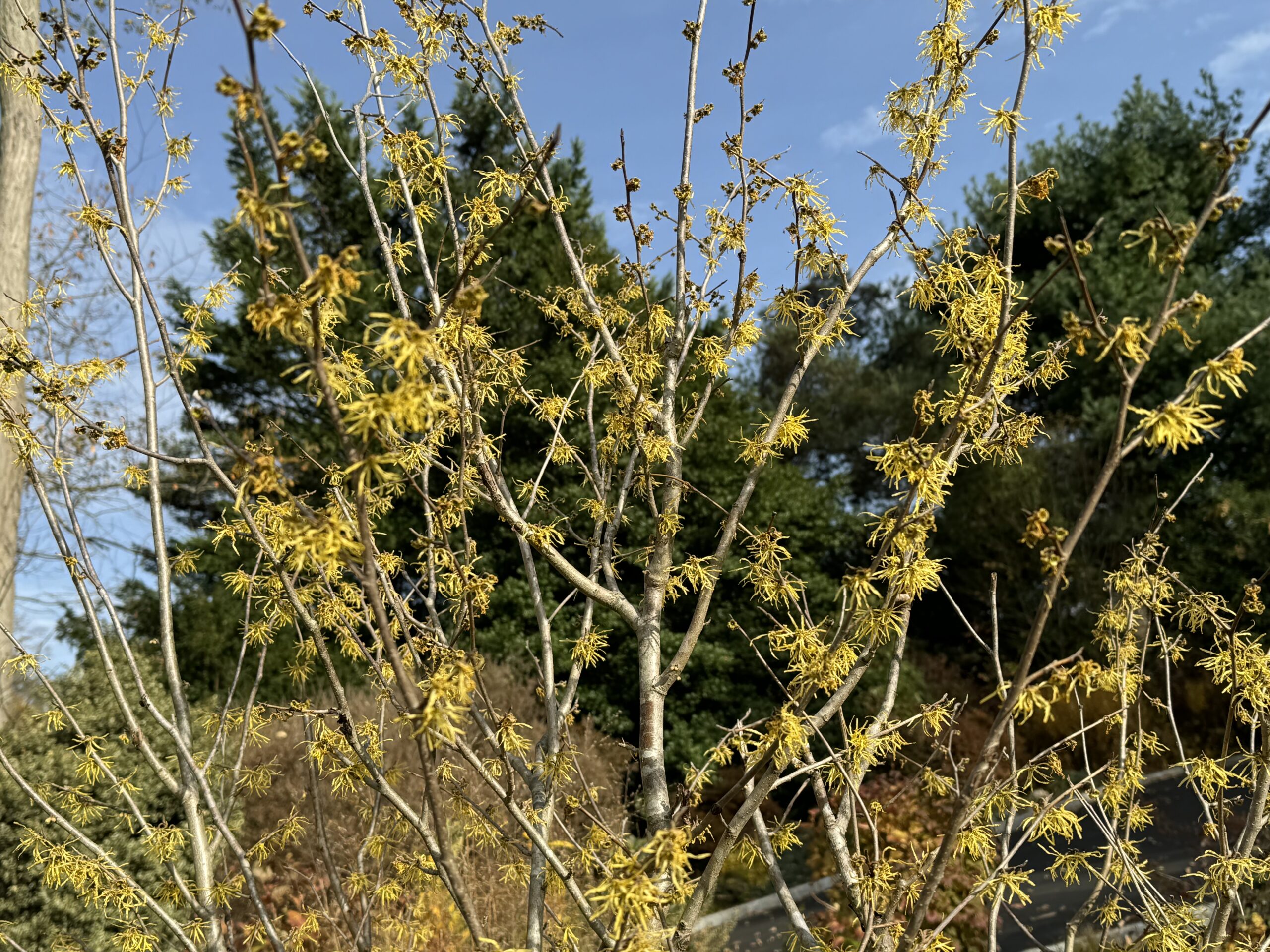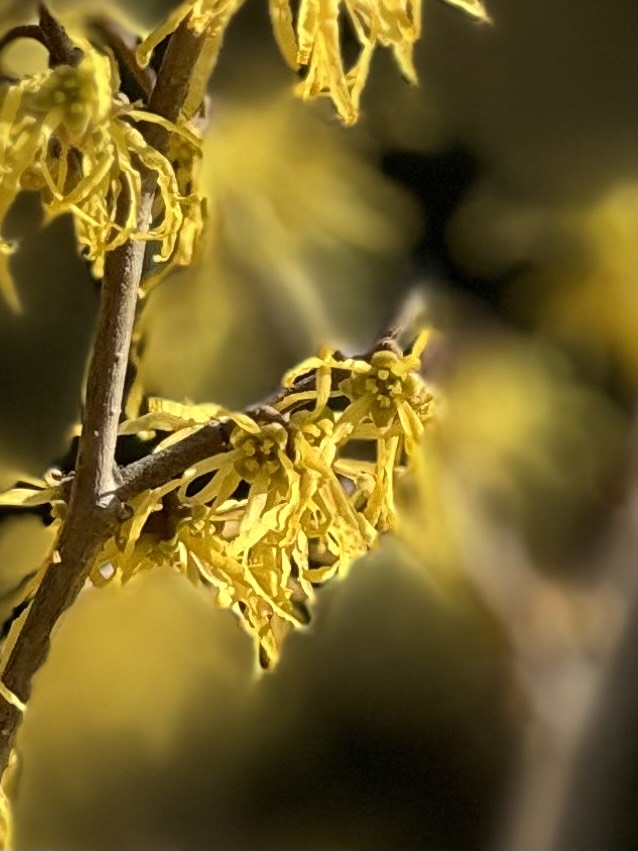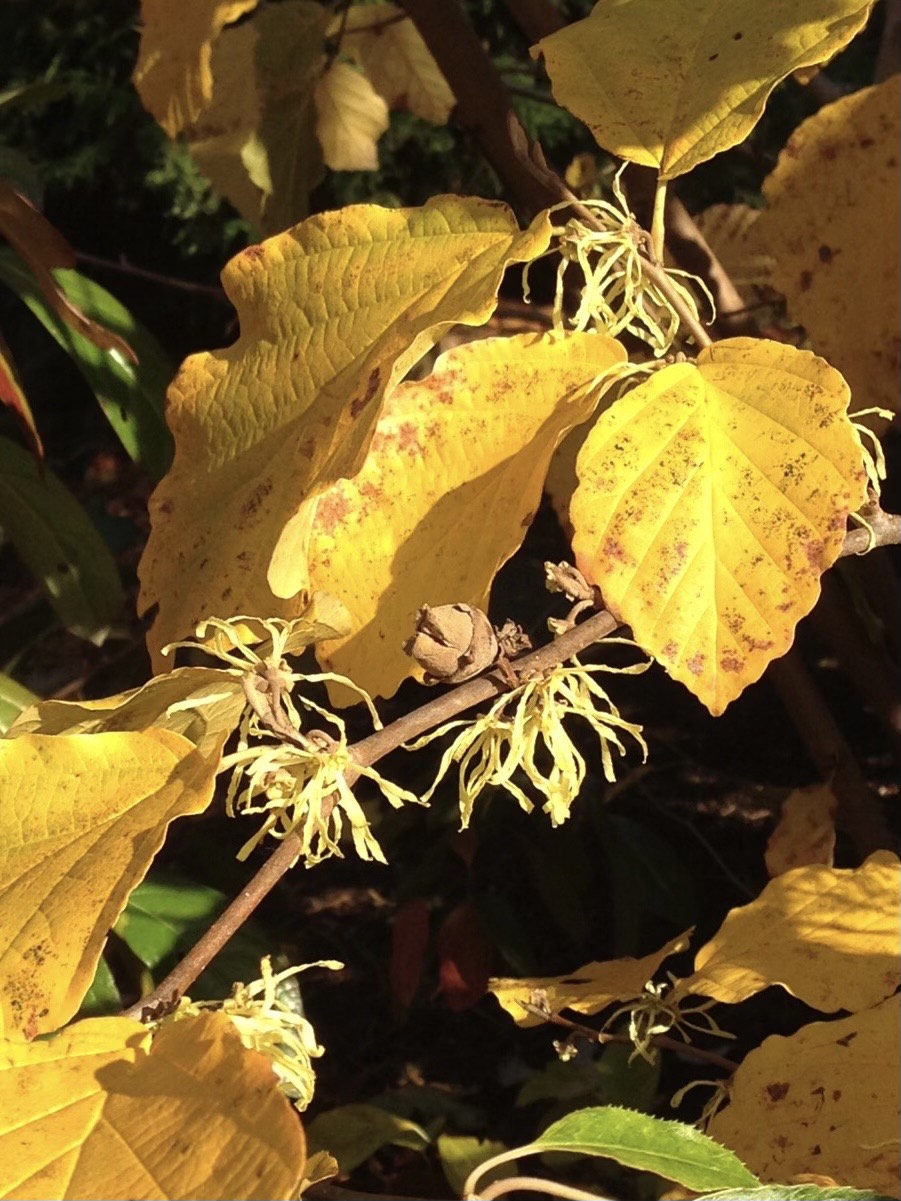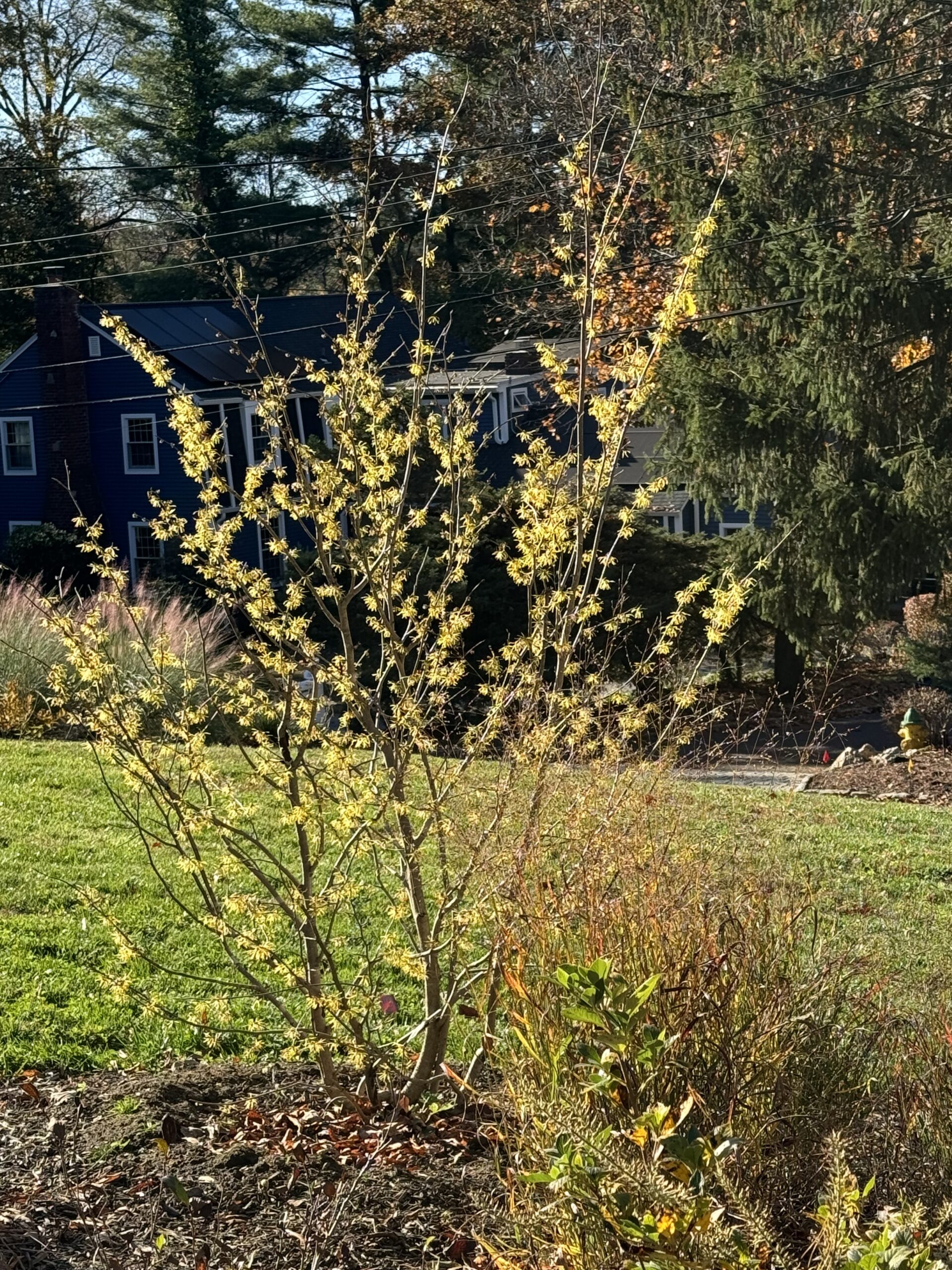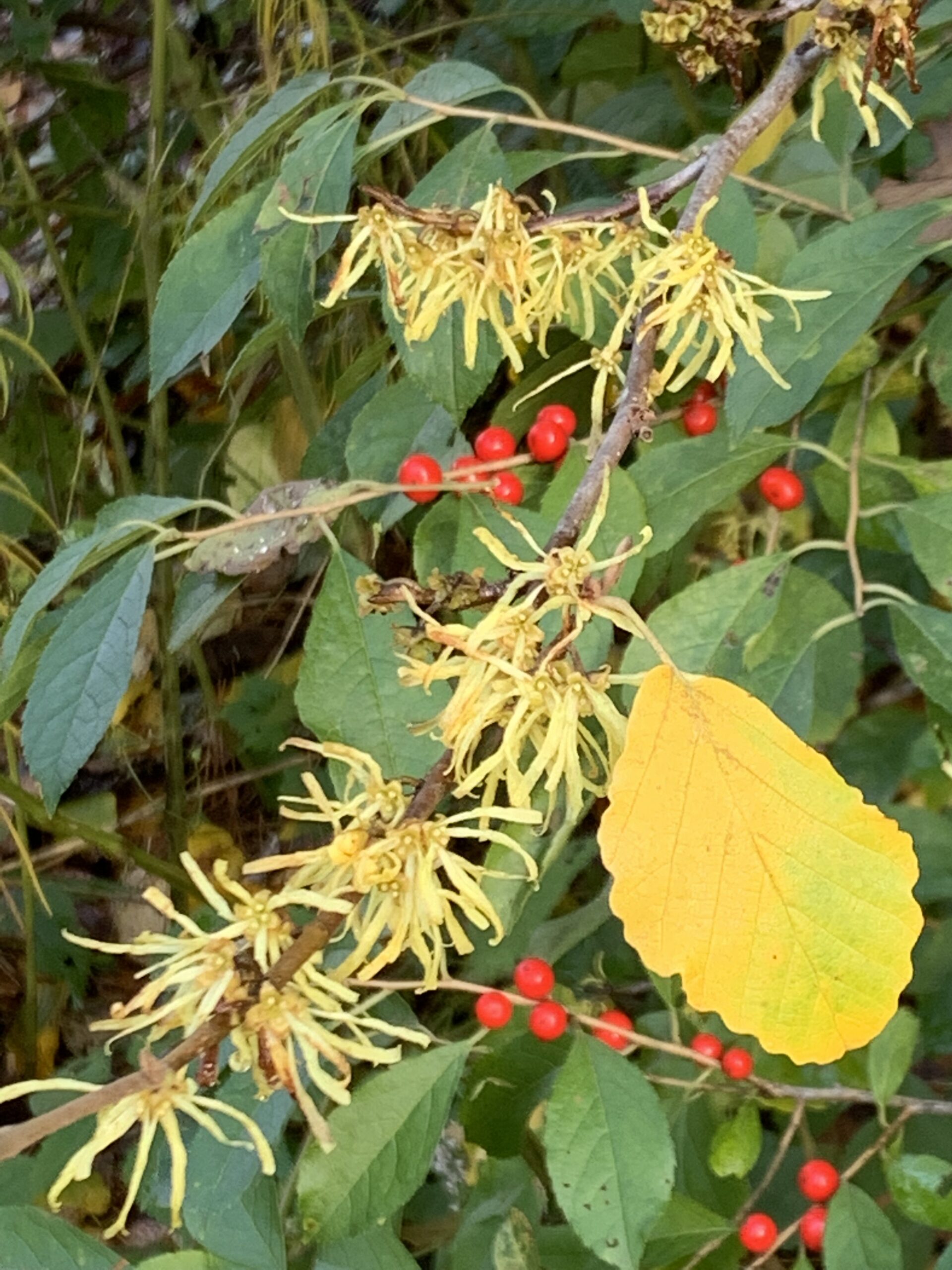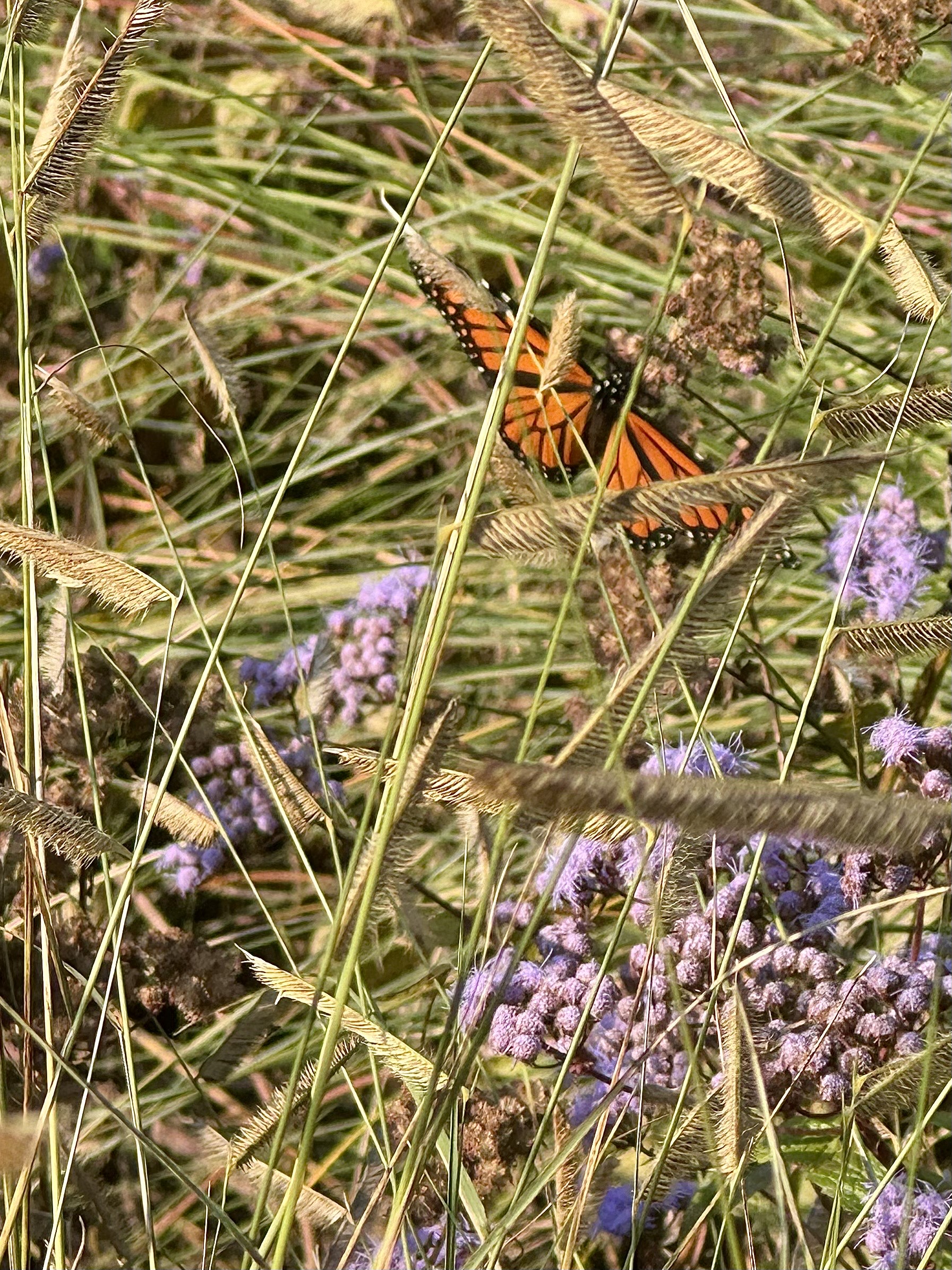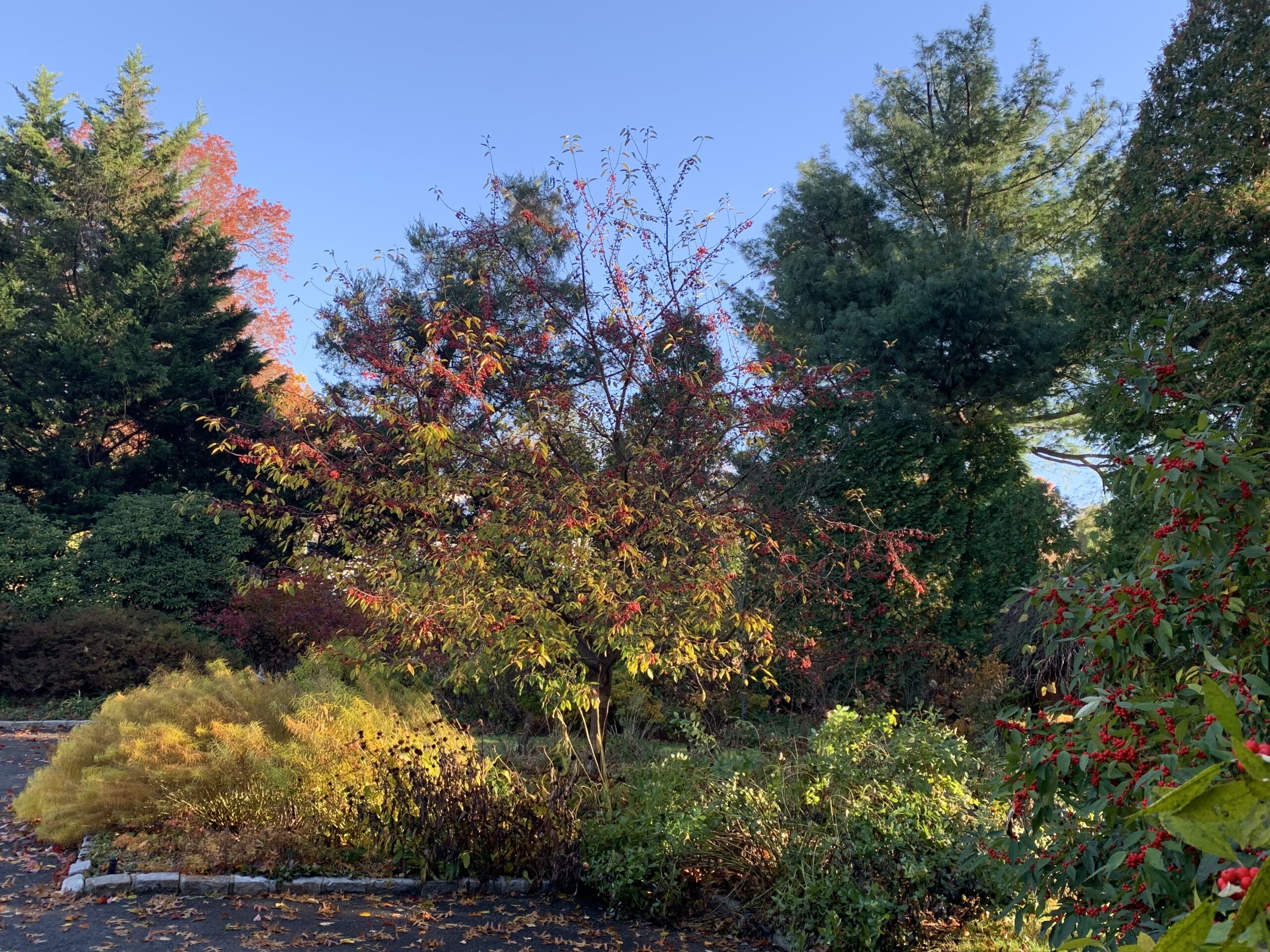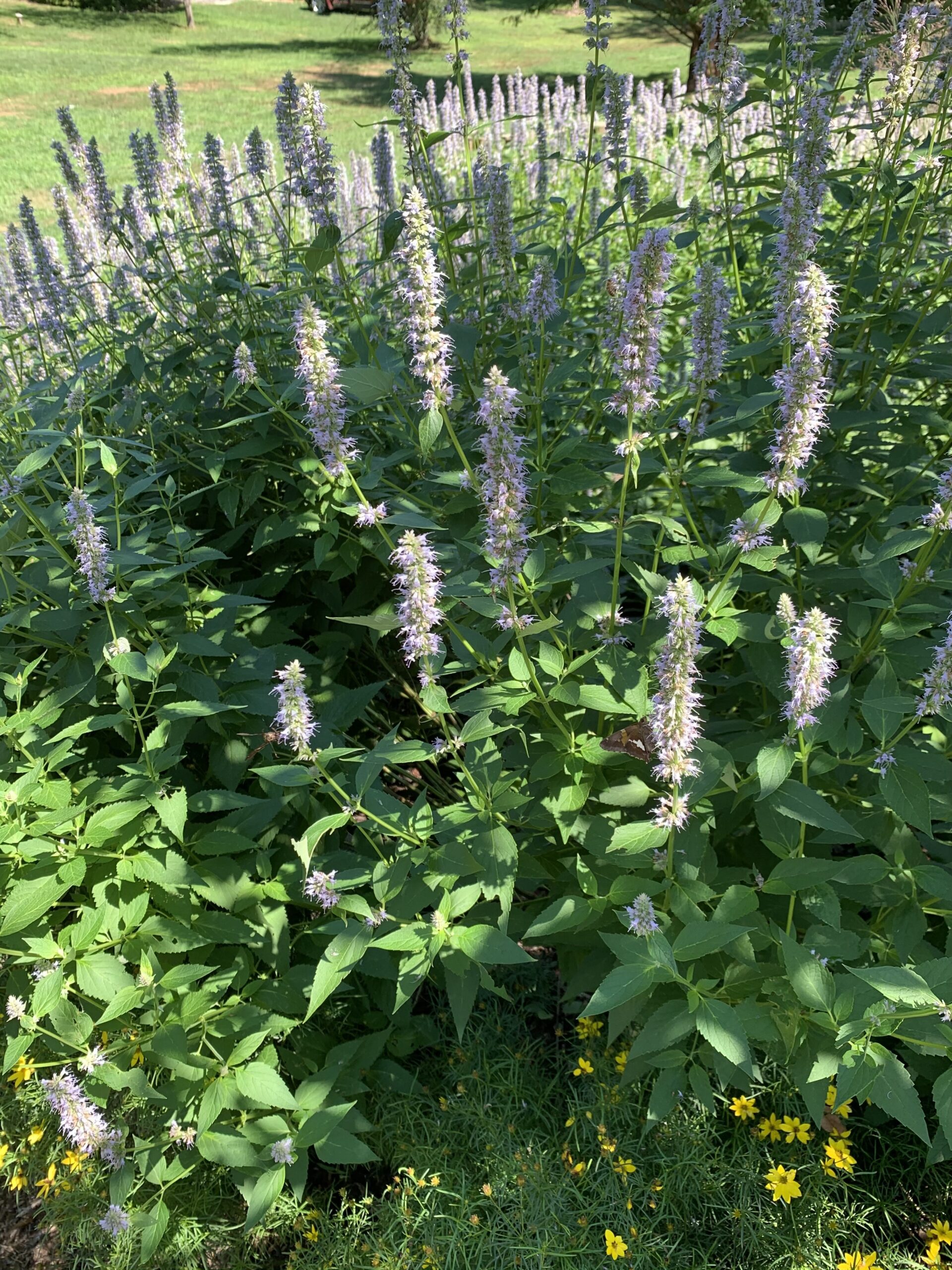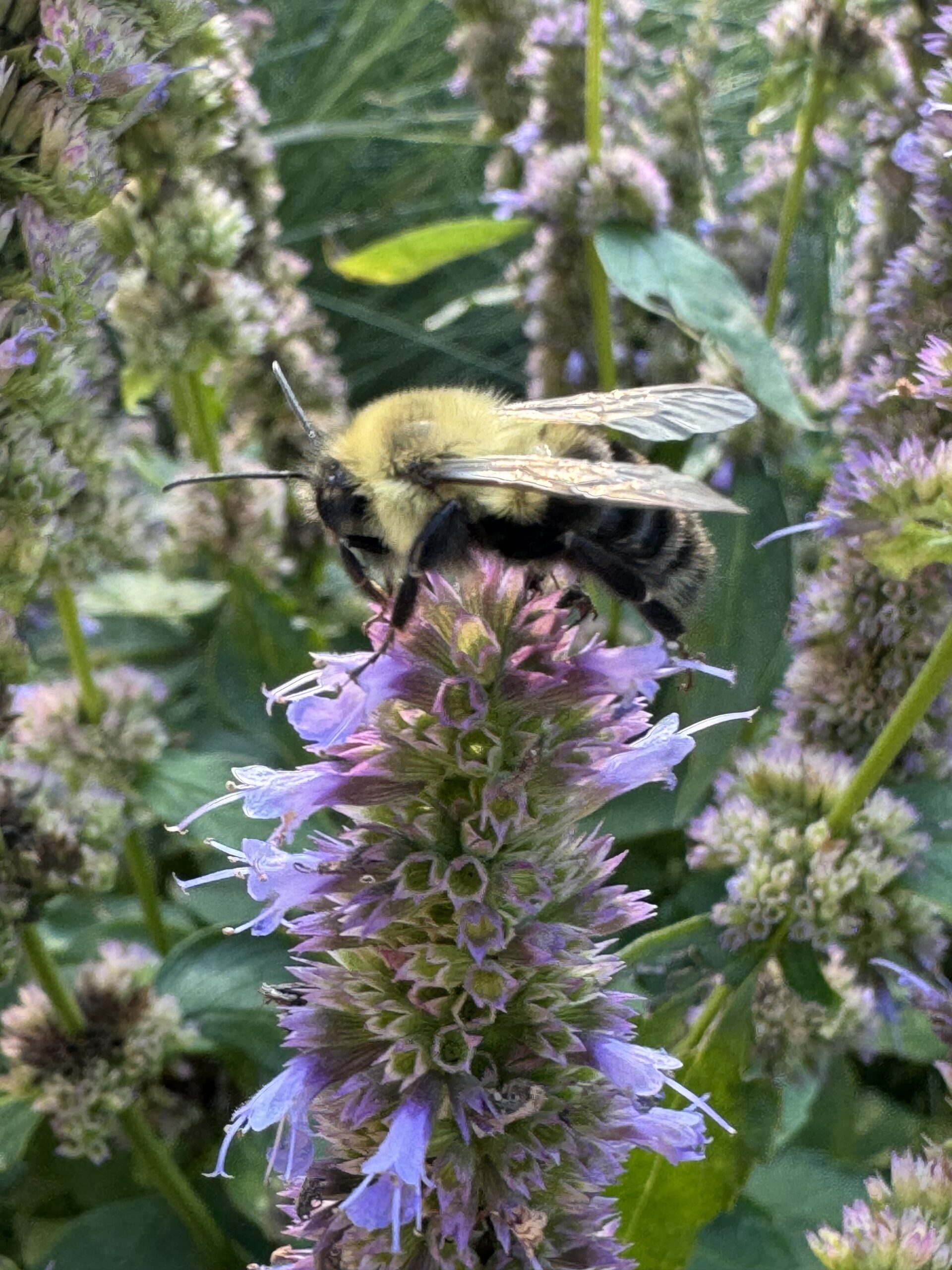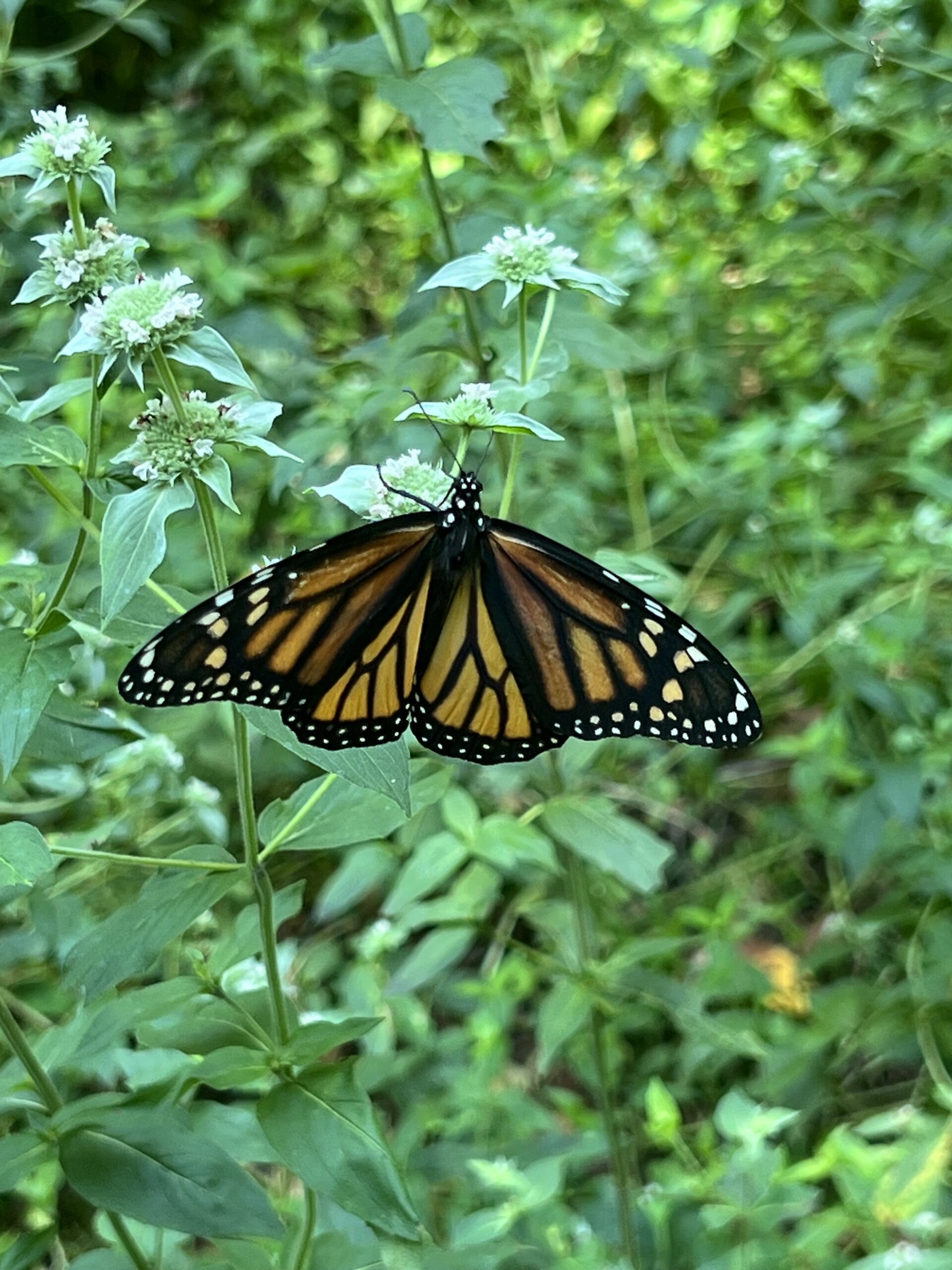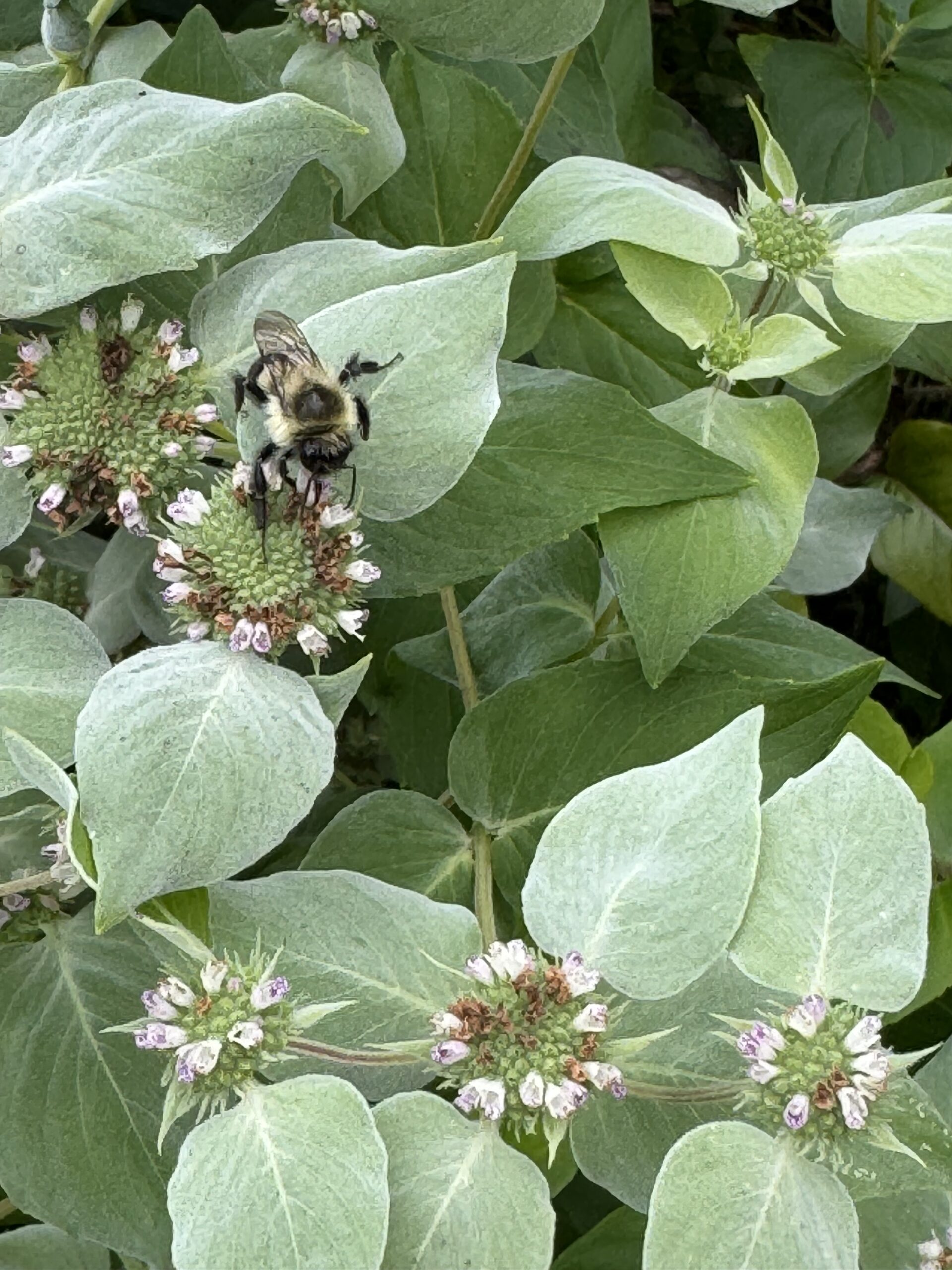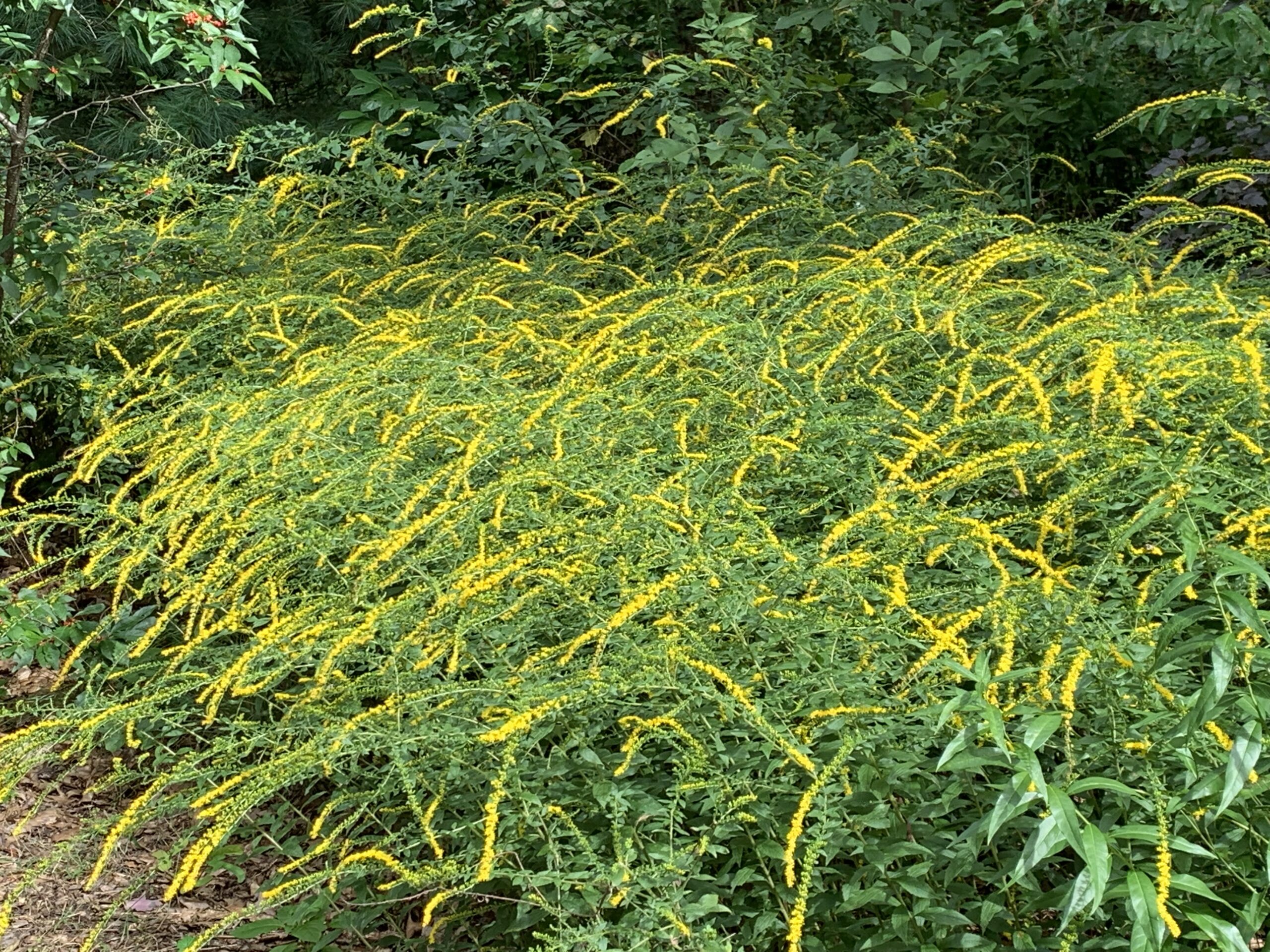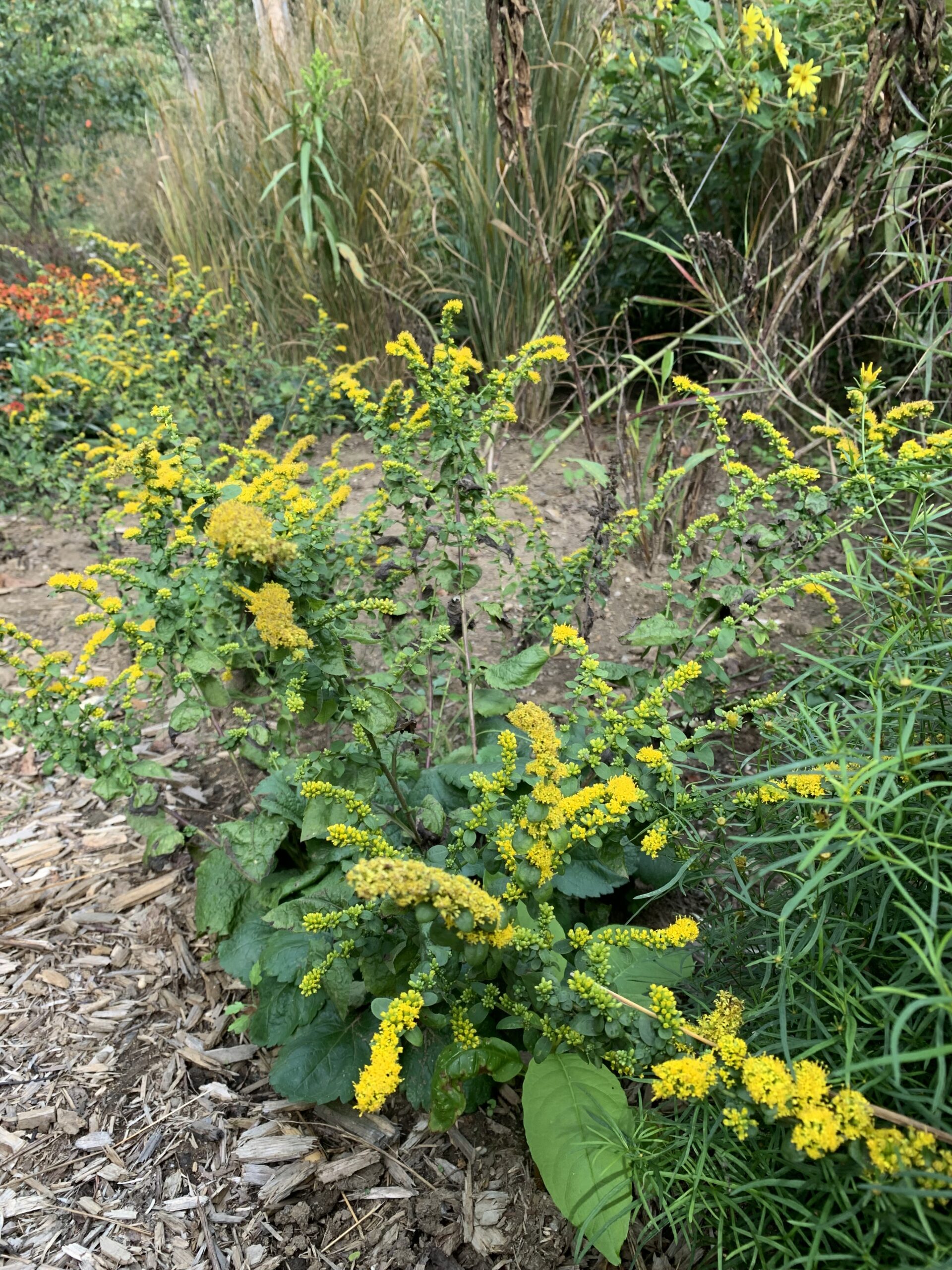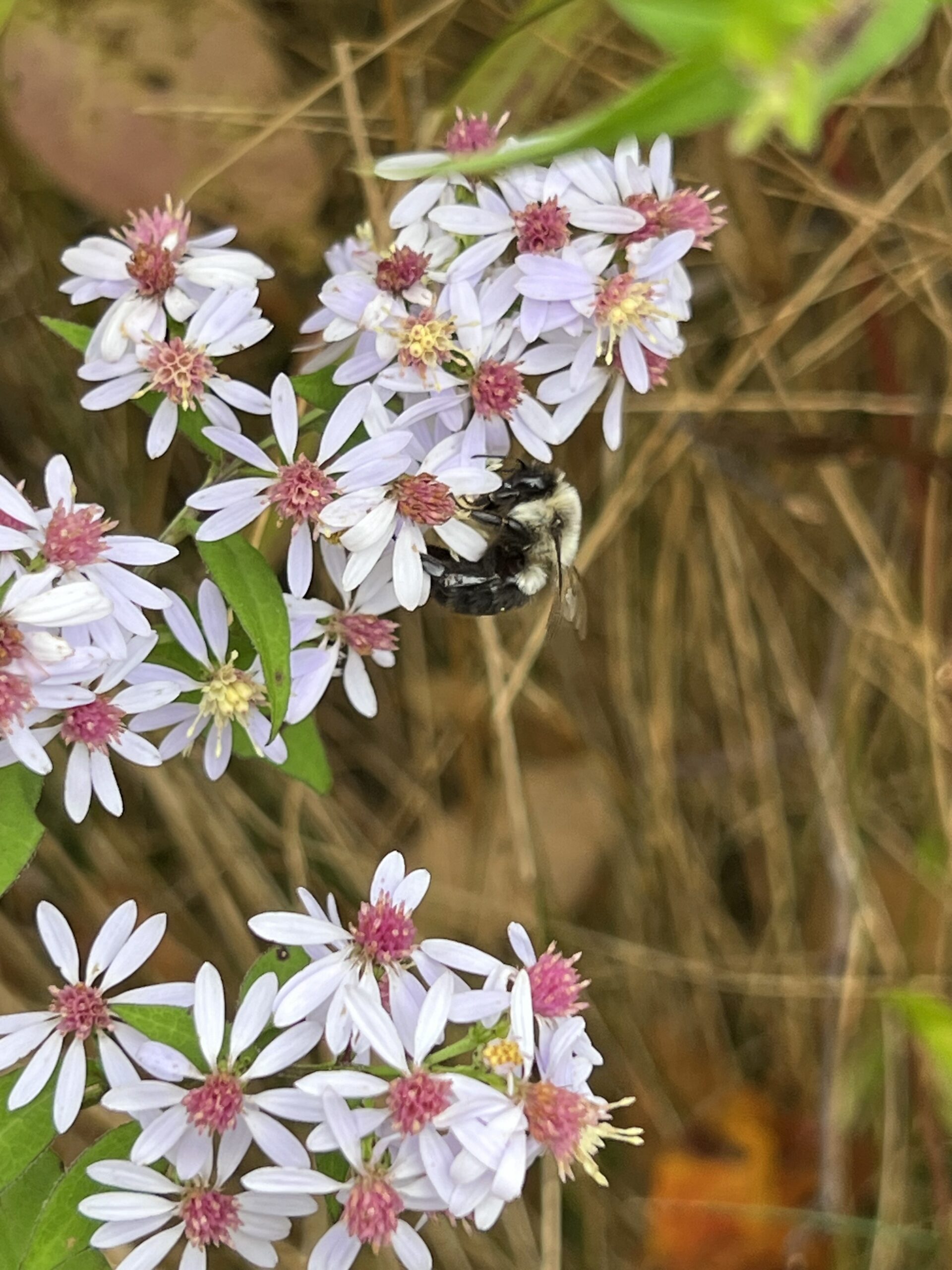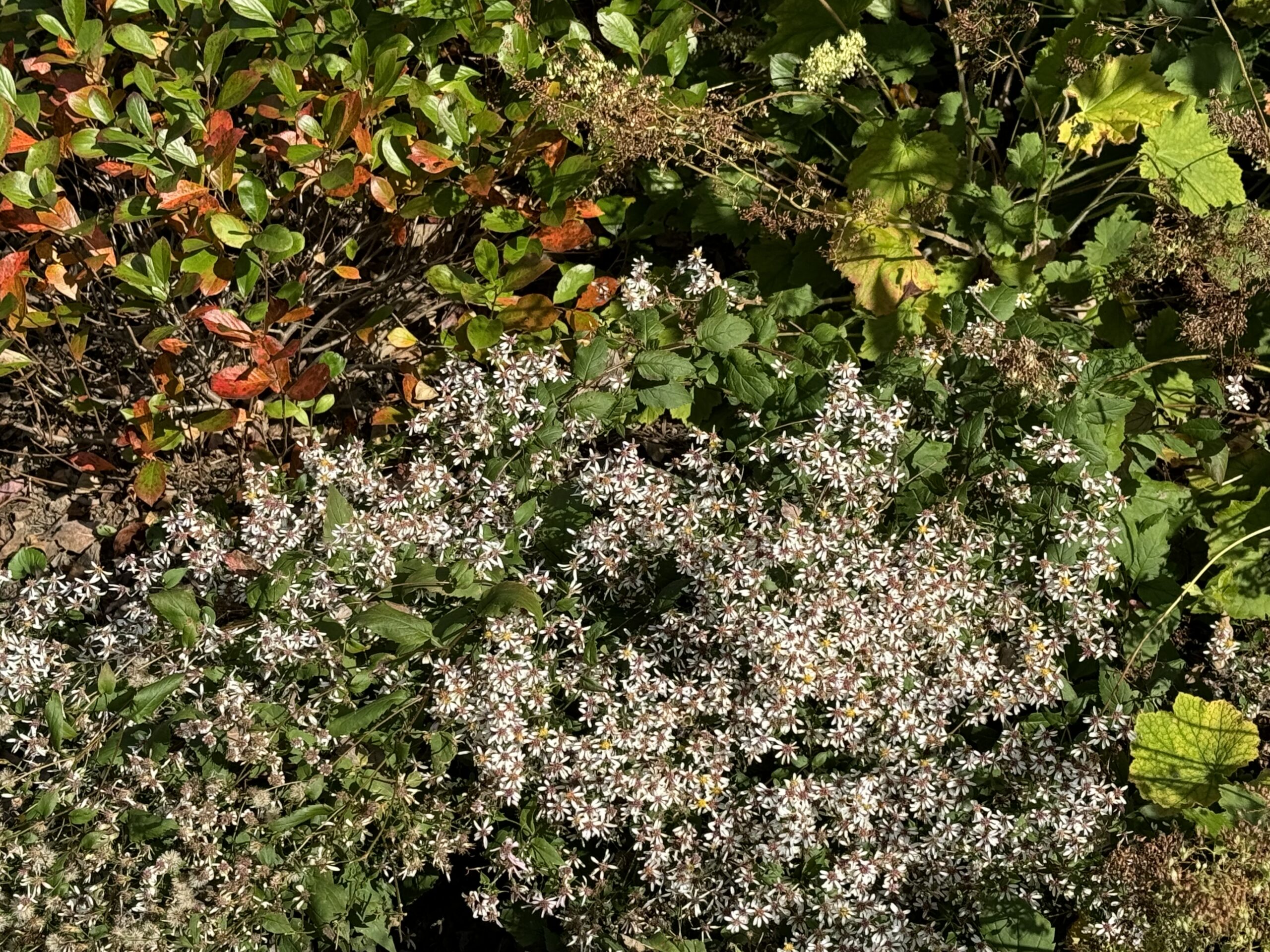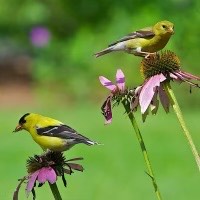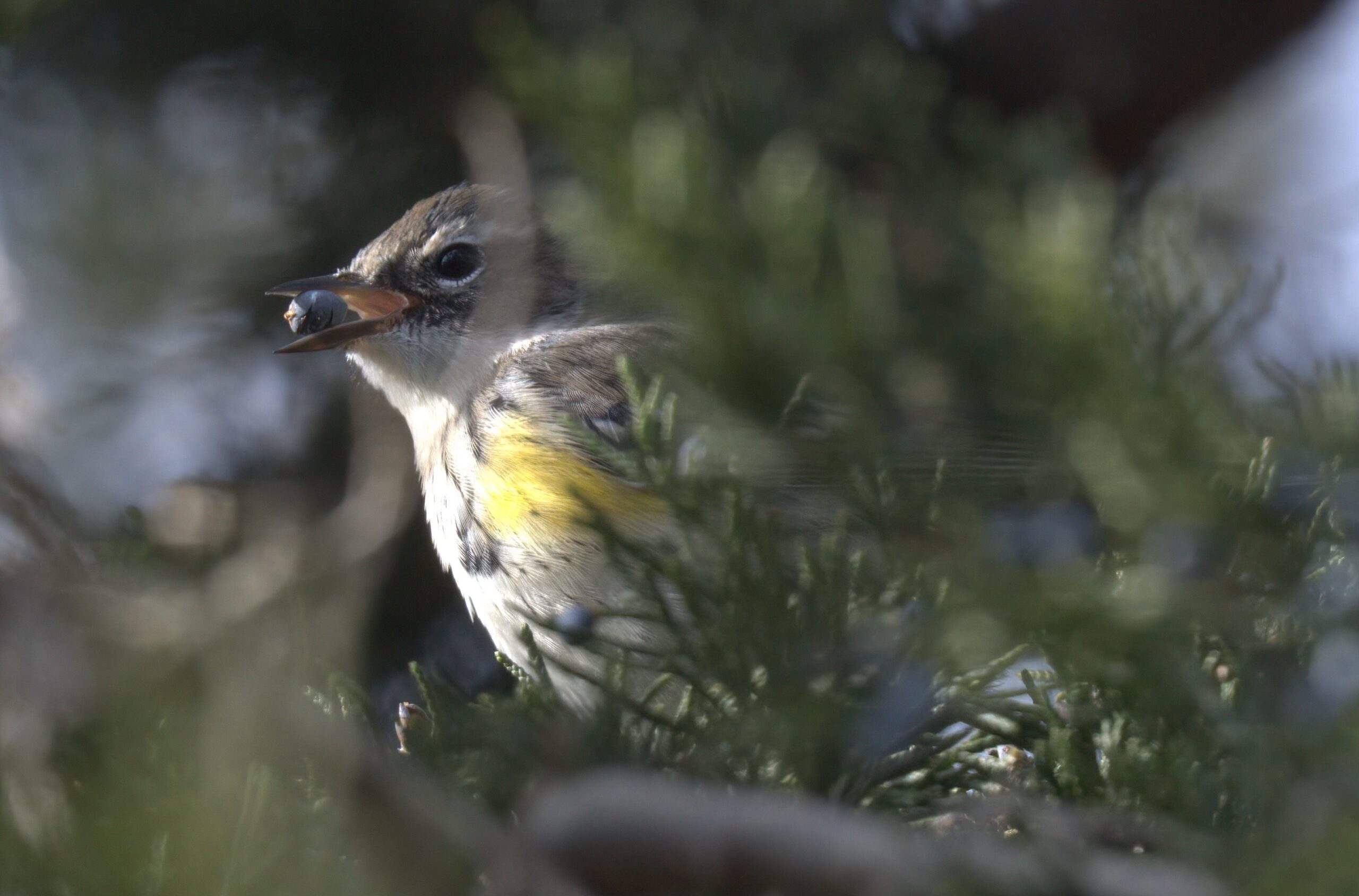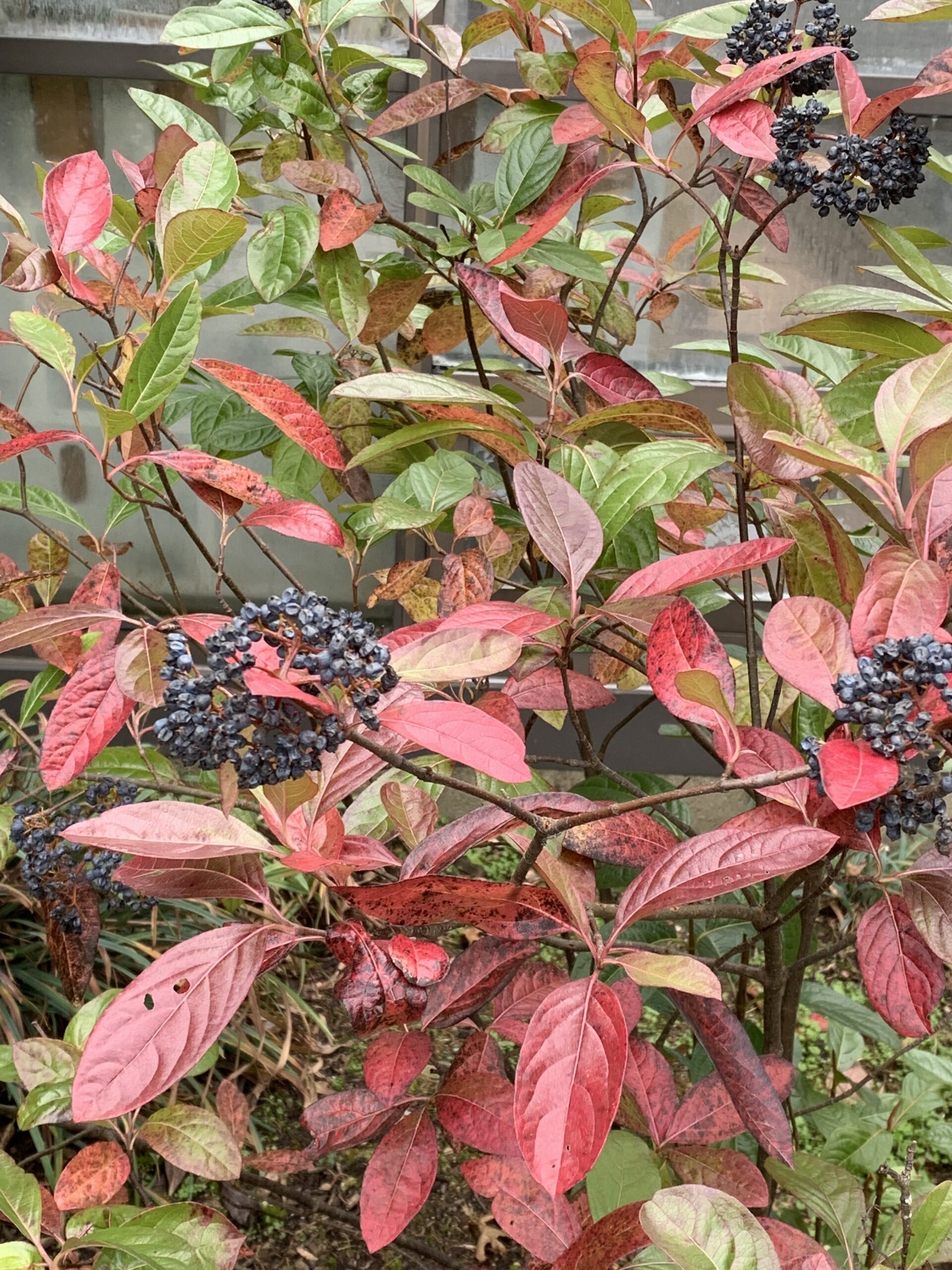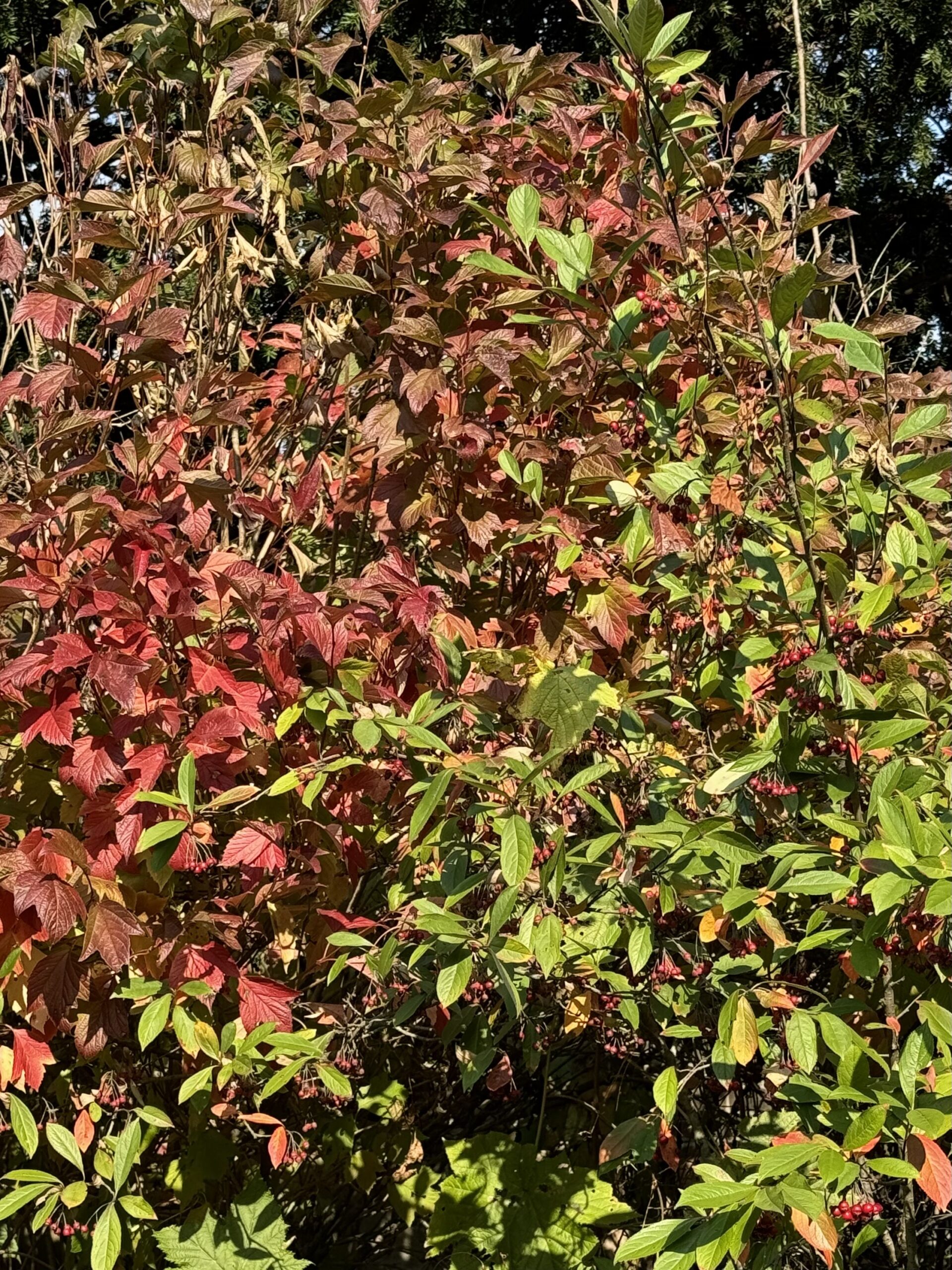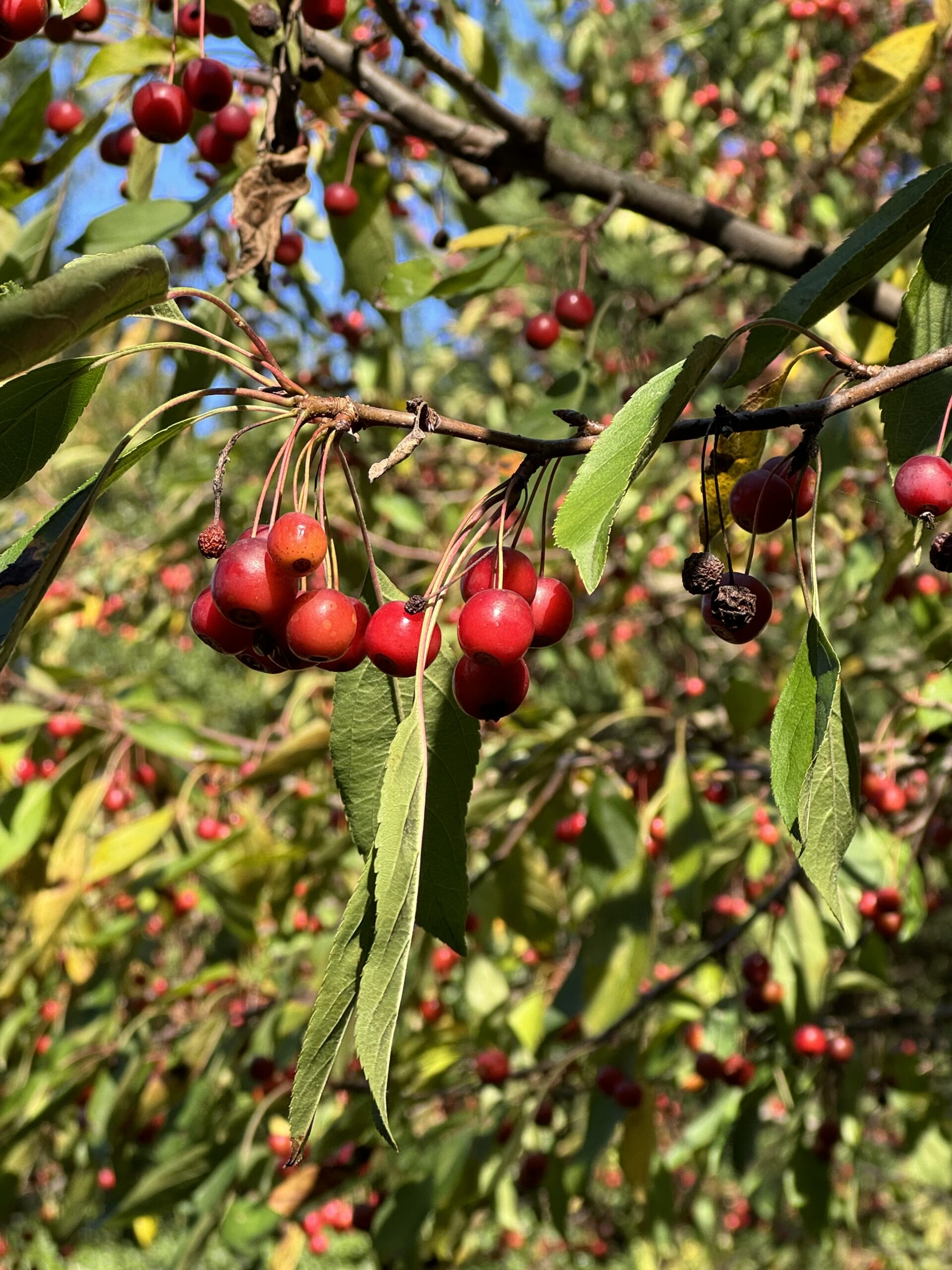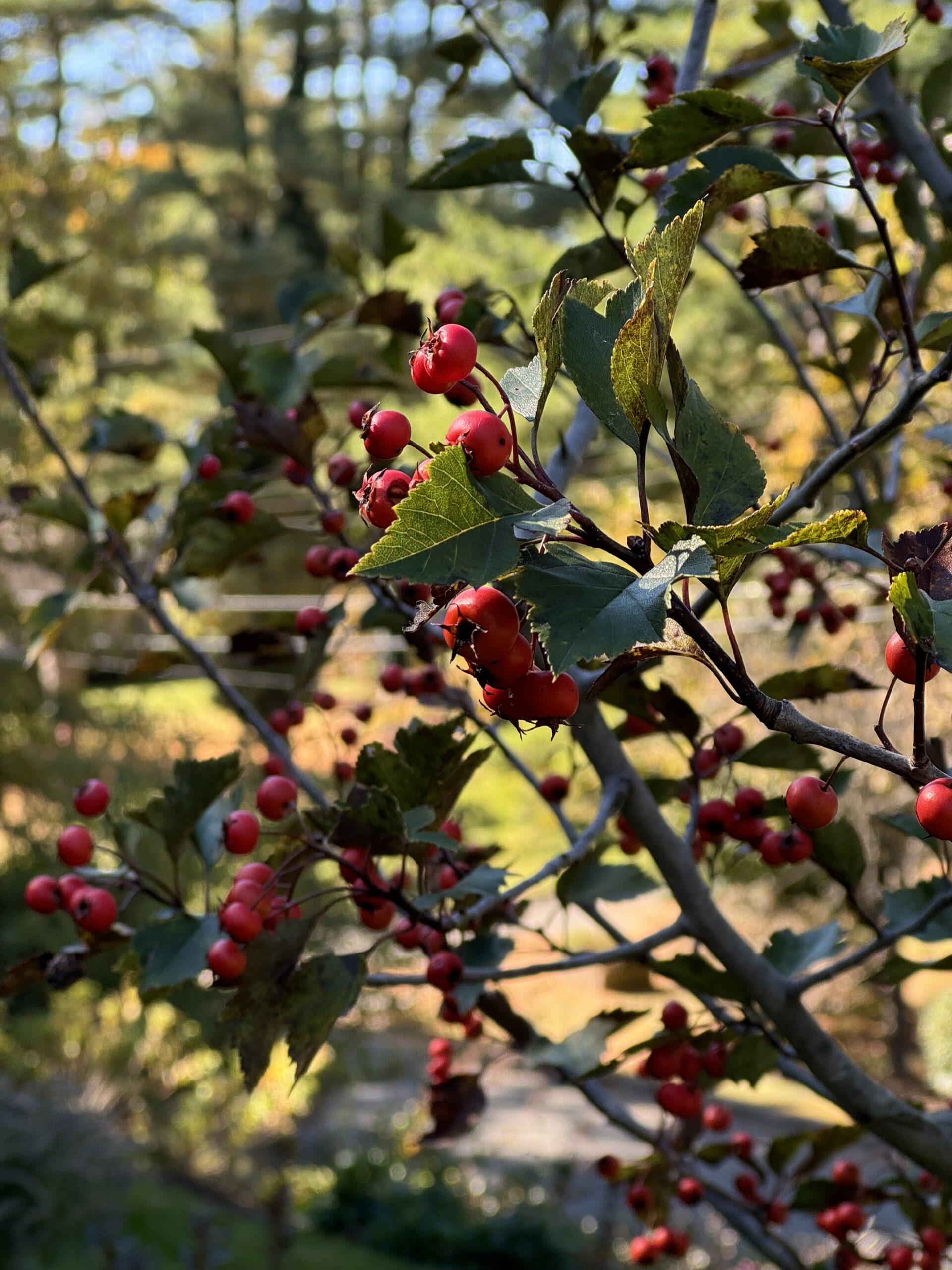Eastern White Pine (Pinus strobus) is a magnificent tree that once dominated the North American landscape in the east from Newfoundland to Georgia and farther west from Ontario to Arkansas. One of the tallest trees in North America, it can reach well over 100 feet in height and live for hundreds of years. Its long, soft needles give it a somewhat fuzzy appearance at a distance, and with age, it takes on an irregular flat-topped shape that is unmistakable.
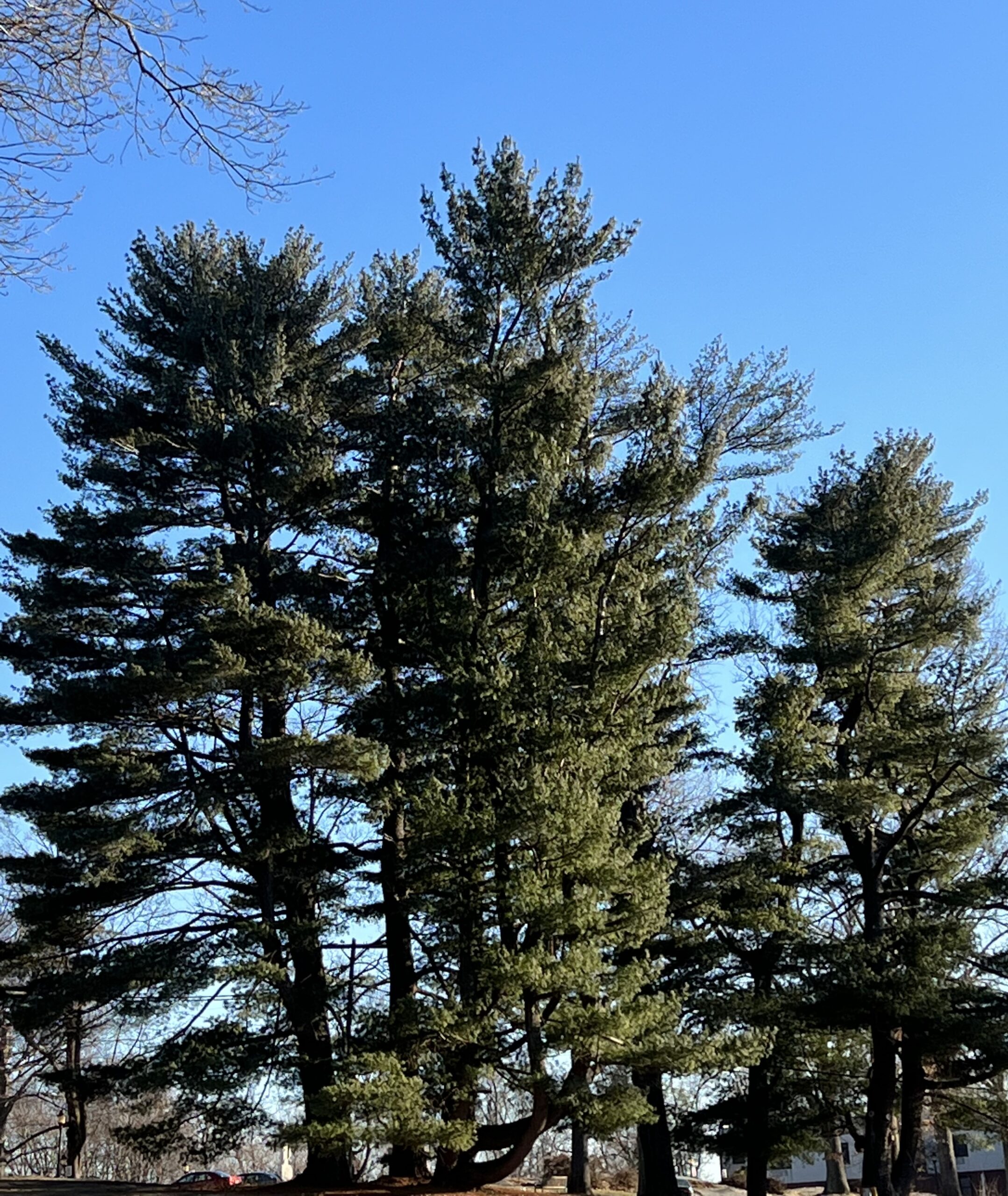
The needles are fragrant, 2 to 5 inches long, and held in bundles of 5. Young pine cones are 4 to 8 inches long and green, turning brown as they mature. Older cones are often tipped with whitish sap and are quite ornamental.
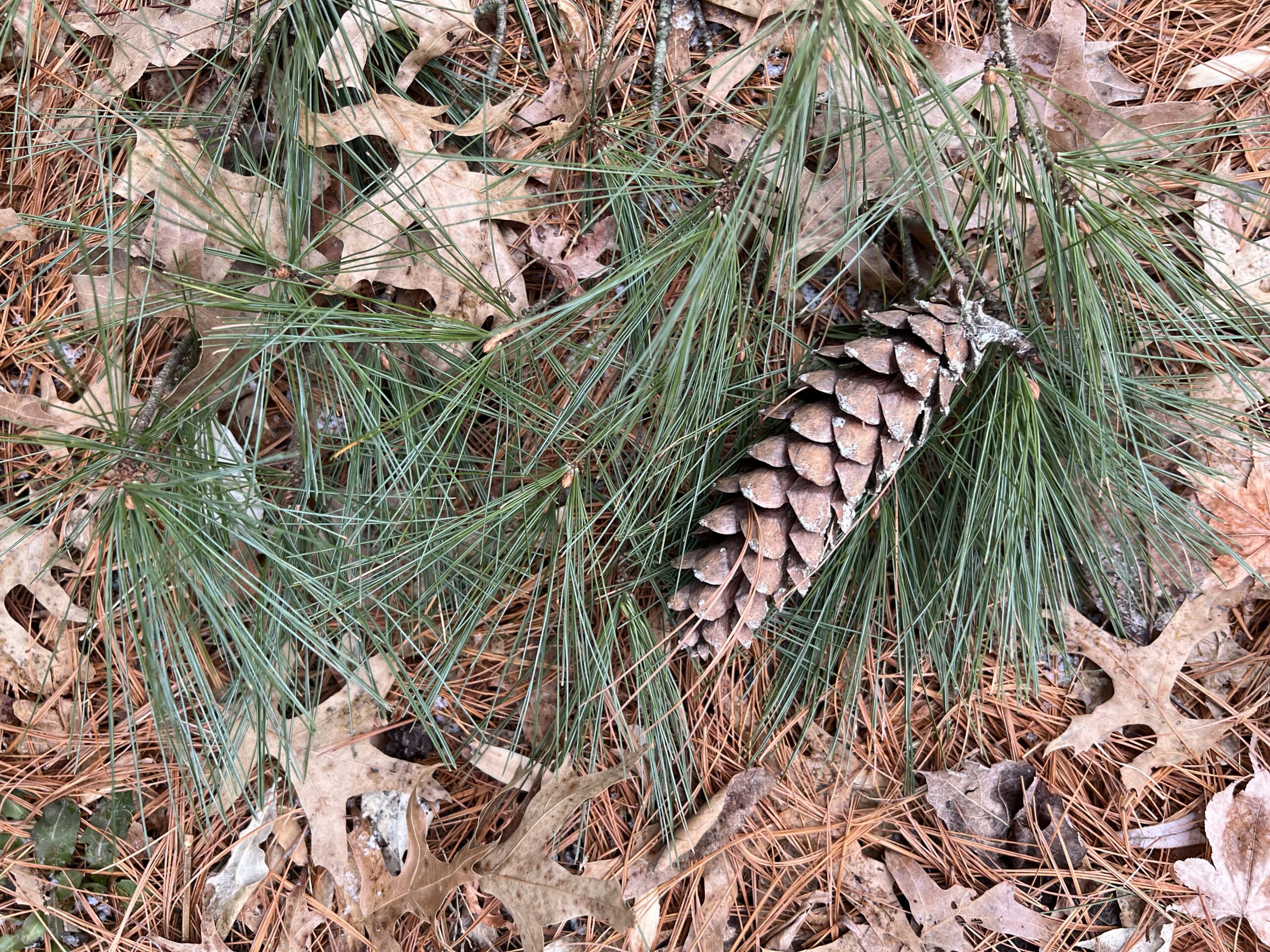
White Pine is incredibly important to wildlife. Over 200 species of caterpillars develop on the needles of White Pine, making it one of the most important sources of food for baby songbirds. Many other insects also depend upon the bark, buds, cones, or needles of White Pine, so dozens of species of birds hunt and nest on the trees year-round. The tops of large White Pines are favored nesting sites for hawks, owls, and bald eagles. Numerous small mammals feed on the seeds produced in the pine cones, but deer avoid White Pine altogether, unless they are near starvation.
White Pine is relatively fast-growing, adding 2 to 3 feet per year. It typically grows a straight trunk with rows of parallel branches in whorls around the trunk, adding a new row each year. As the tree ages, it tends to shed its lower branches, which makes it great for lumber, but not for a privacy screen!
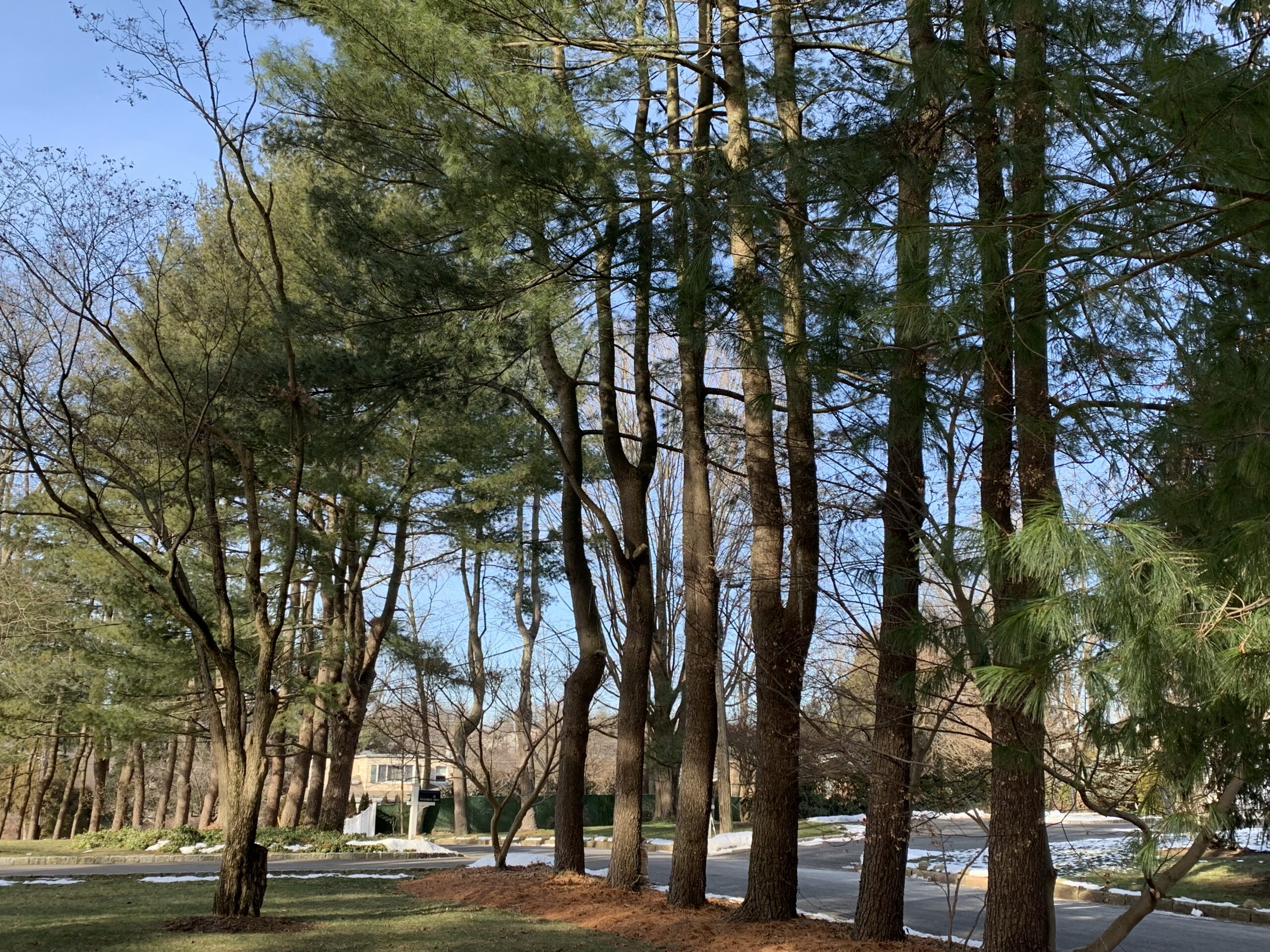
Taller than most of the trees around them, White Pines often take the brunt of wind storms, causing heavy branches to fall. For that reason, planting White Pines too close to houses or other structures can be risky, especially as weather becomes more extreme. So, homeowners these days are being advised against planting White Pines.
But wait! Not all White Pines grow to be giant trees! There are over 100 modern cultivars of White Pine, and many of them are slow-growing, small-to-medium-sized trees and shrubs! You can easily find a beautiful White Pine – or several! — for your landscape.

mature White Pine tree in the background
The word “cultivar” is short for “cultivated variety” and means that a plant has been propagated through human intervention to develop certain desirable features. In this case, the desirable feature is smaller size. Shrub-sized White Pines are a great choice for evergreen foundation plants in residential landscapes.
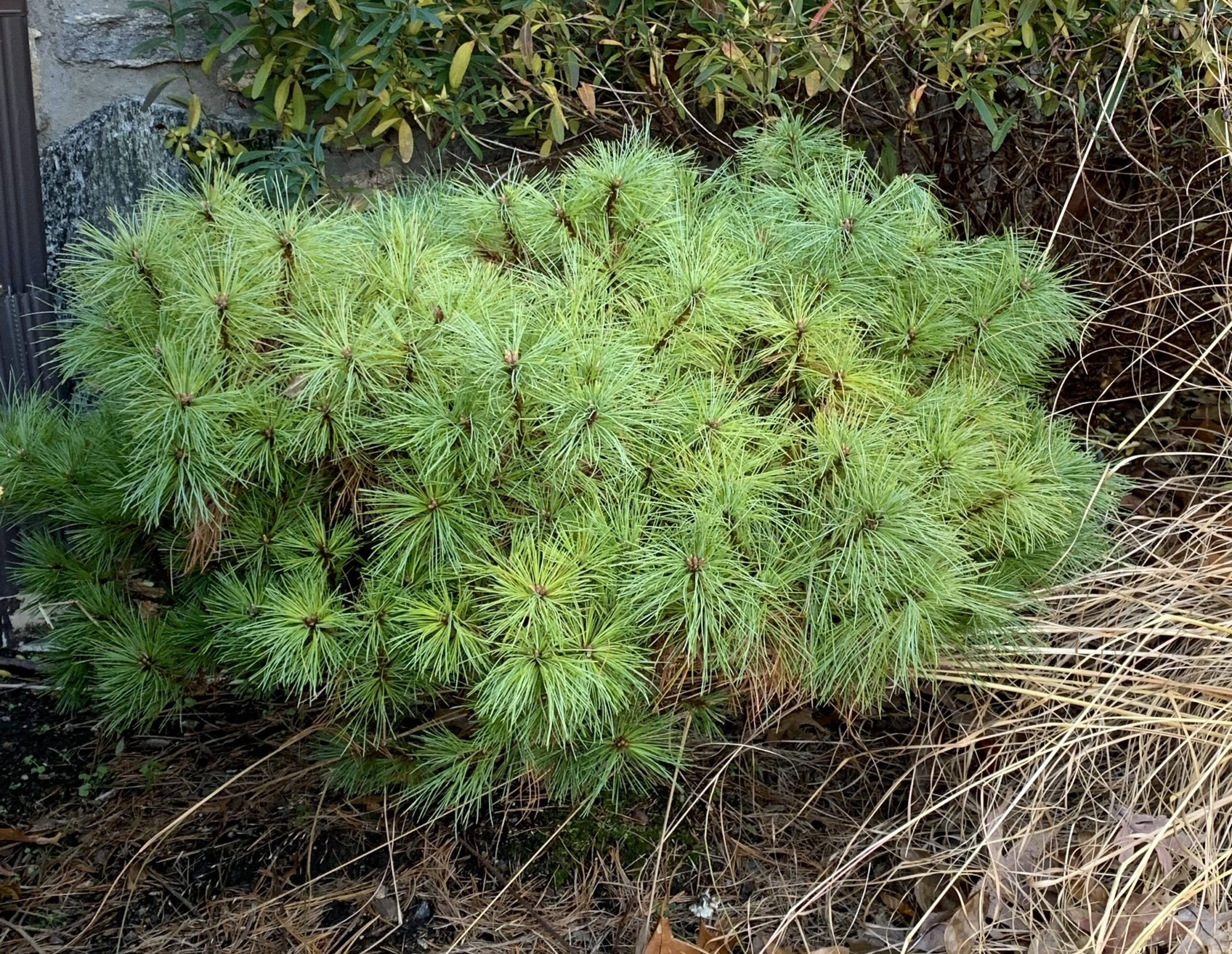
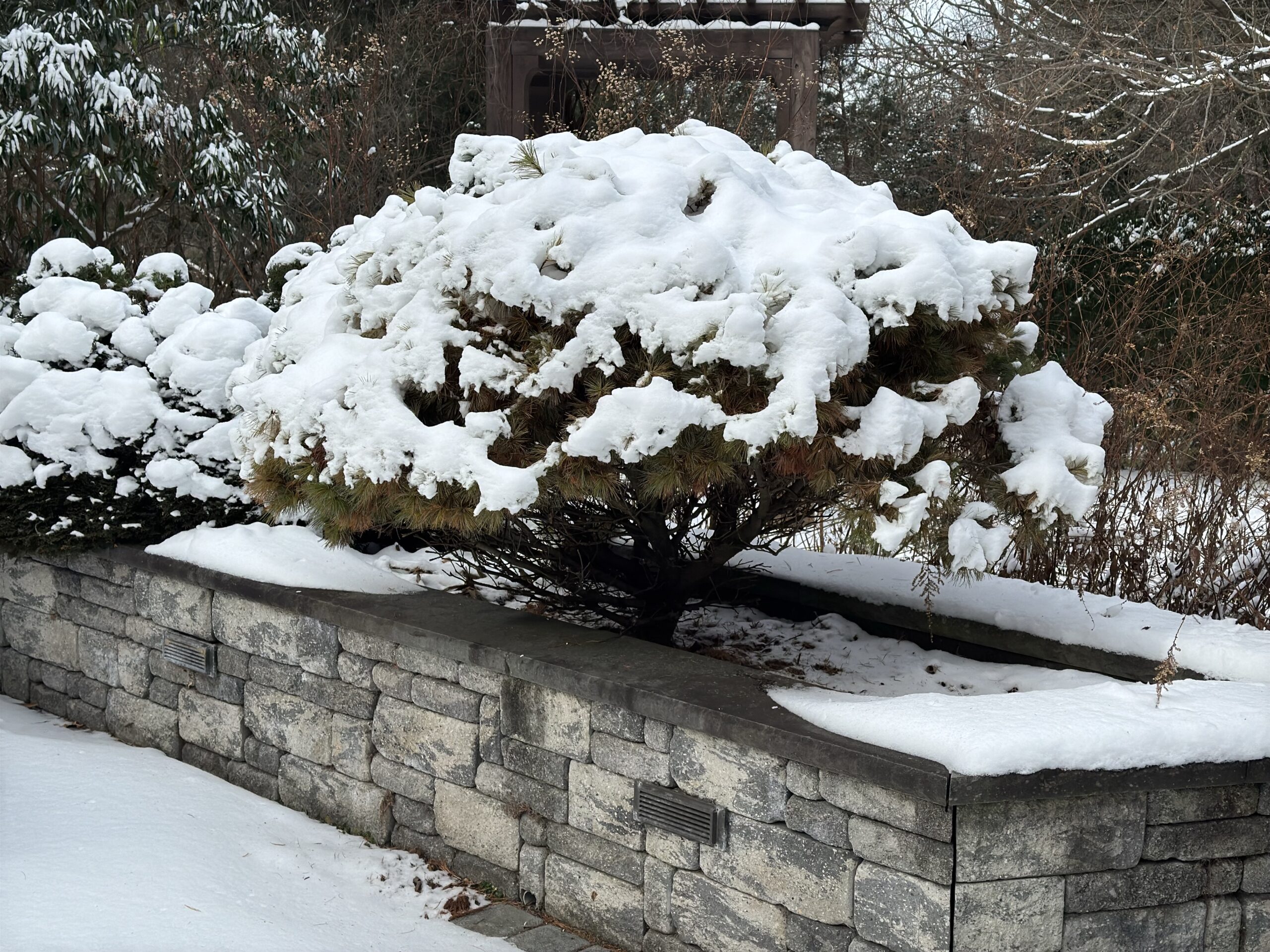
Pinus strobus ‘Soft Touch’ is a dwarf cultivar that reaches a maximum size of 3 feet tall and 3 to 4 feet wide over 20 years. It is a lovely pine-green all summer long and, like the big White Pines, will drop some of its needles in the spring before putting out new growth. It looks almost fluffy, and it really is soft to the touch! The pictured 10-year-old specimen has yet to produce pine cones, but ‘Soft Touch’ is reported to produce small green cones eventually. Slow growth even makes it suitable for containers without need for transplanting for many years. It requires almost no care. No pruning, average water amounts, and application of compost rather than fertilizer, have kept both of the pictured plants happy. Full sun is best for virtually all evergreens, and White Pine definitely prefers it.
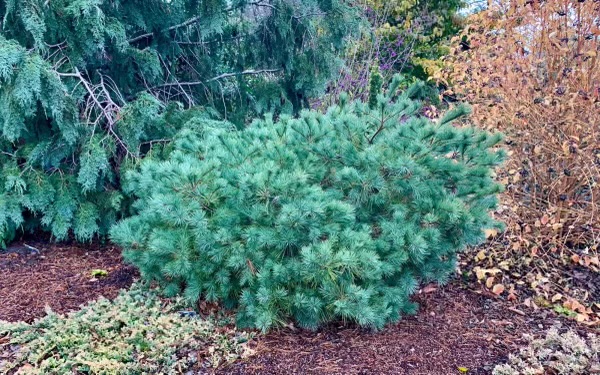
‘Blue Shag’ is another dwarf cultivar with blue-green foliage and a rounded, mounding form. It will slowly reach 2 to 4 feet tall and 5 to 6 feet wide. Its needles are shorter and its growth somewhat denser than ‘Soft Touch,’ but it does just as well with just as little fuss.
One of the more interesting cultivars of White Pine is a medium-sized tree, 20 to 40 feet tall, with curling needles, Pinus strobus ‘Torulosa.’ Its unusual needles apparently inspired efforts to create a dwarf cultivar with the same look. One result is Pinus strobus ‘Mini Twists.’
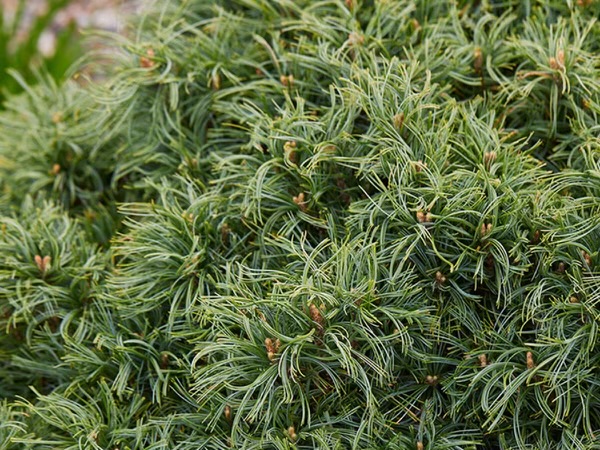
‘Mini Twists’ is a dwarf tree that begins as a rounded, globular shrub when young, but matures into a broad pyramidal form up to 6 feet tall at maturity. It grows very slowly and can live up to 50 years, making it an interesting accent in a suburban landscape.
There is even a “weeping” cultivar of White Pine that is a “semi-dwarf” tree growing 6 to 15 feet tall with long, drooping branches that may touch the ground.

Each White Pine cultivar has its own characteristics, including preferred growing conditions, so read nursery tags and on-line information before selecting one of the many offered for sale.
While native plant advocates generally recommend planting straight species of native plants rather than cultivars, in some cases, cultivars are the only real option. White Pines are in that category. A species White Pine that will grow 80 feet tall may not be a viable choice for the average suburban lot. But a White Pine cultivar of manageable size is an excellent choice, and far superior to those delicate non-native shrubs that need burlap wrappings just to survive Northeastern winters.
So, go ahead! Check out the interesting White Pines that work best for your landscape and add winter interest and native habitat for our wildlife friends!
For more on White Pines and their incredible role in American history, see the blog post linked here.

